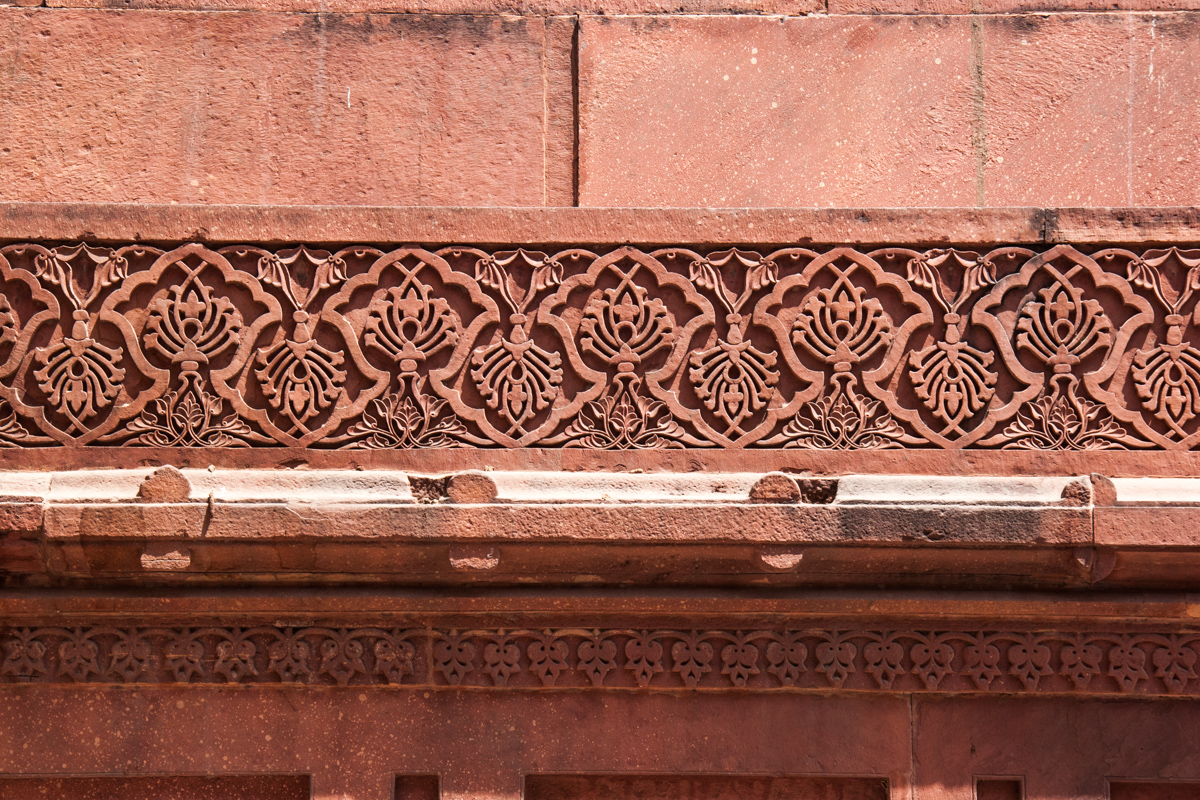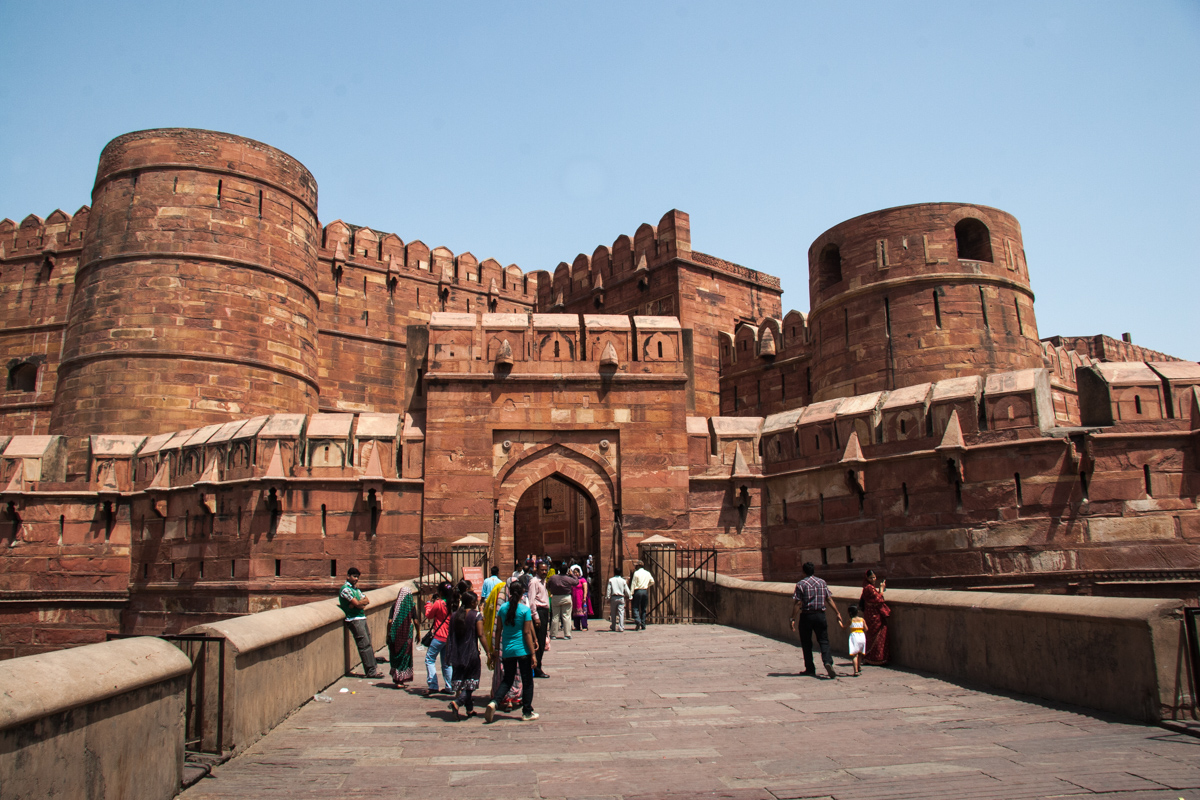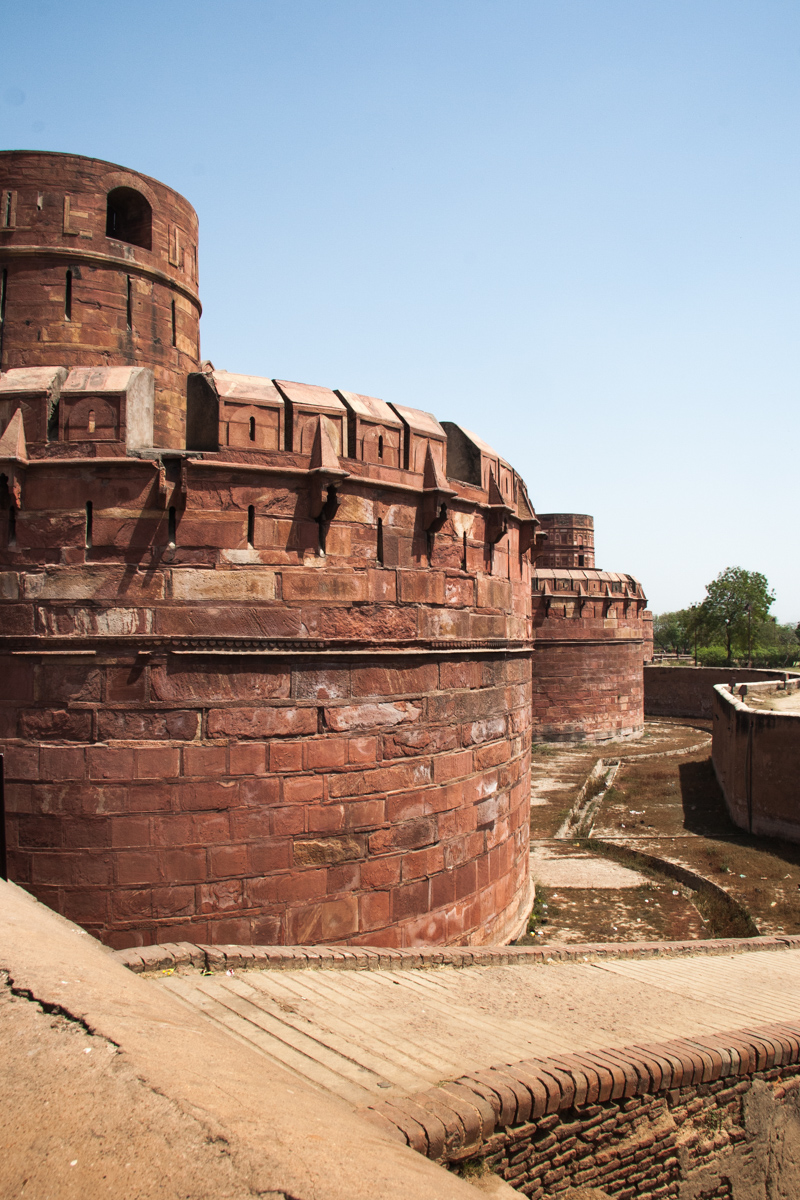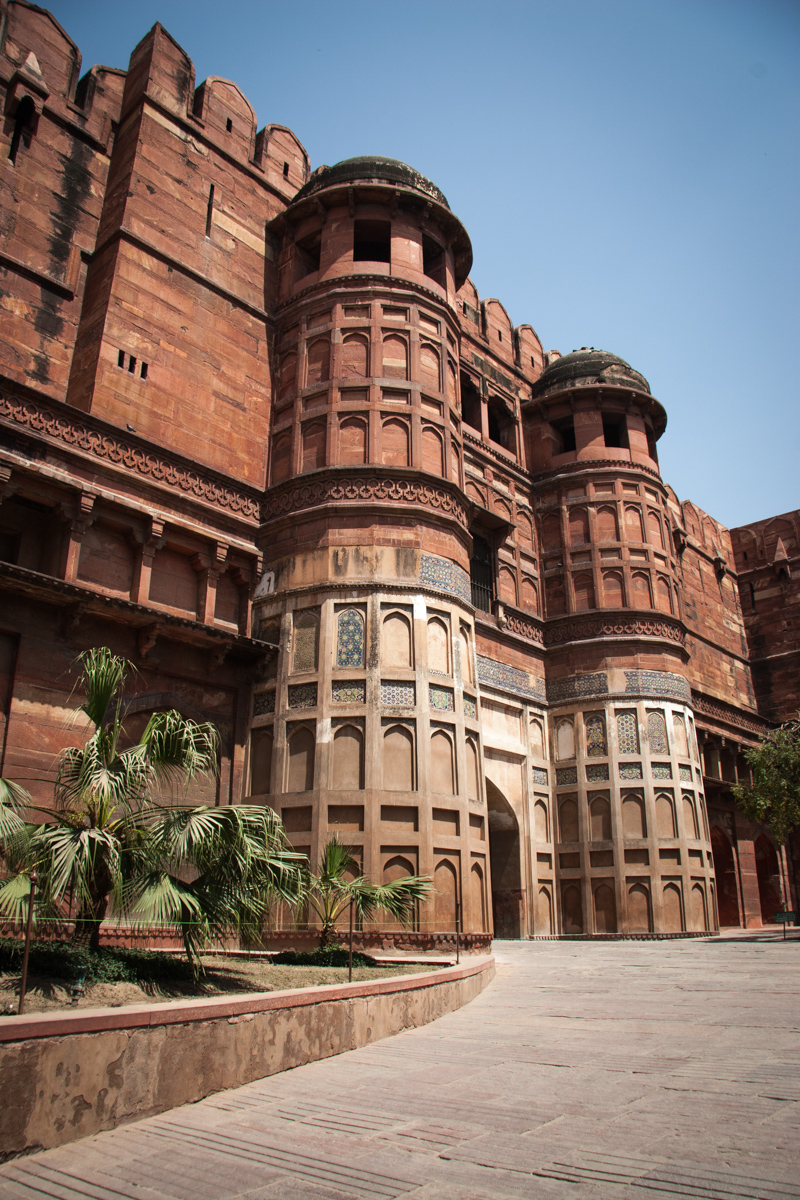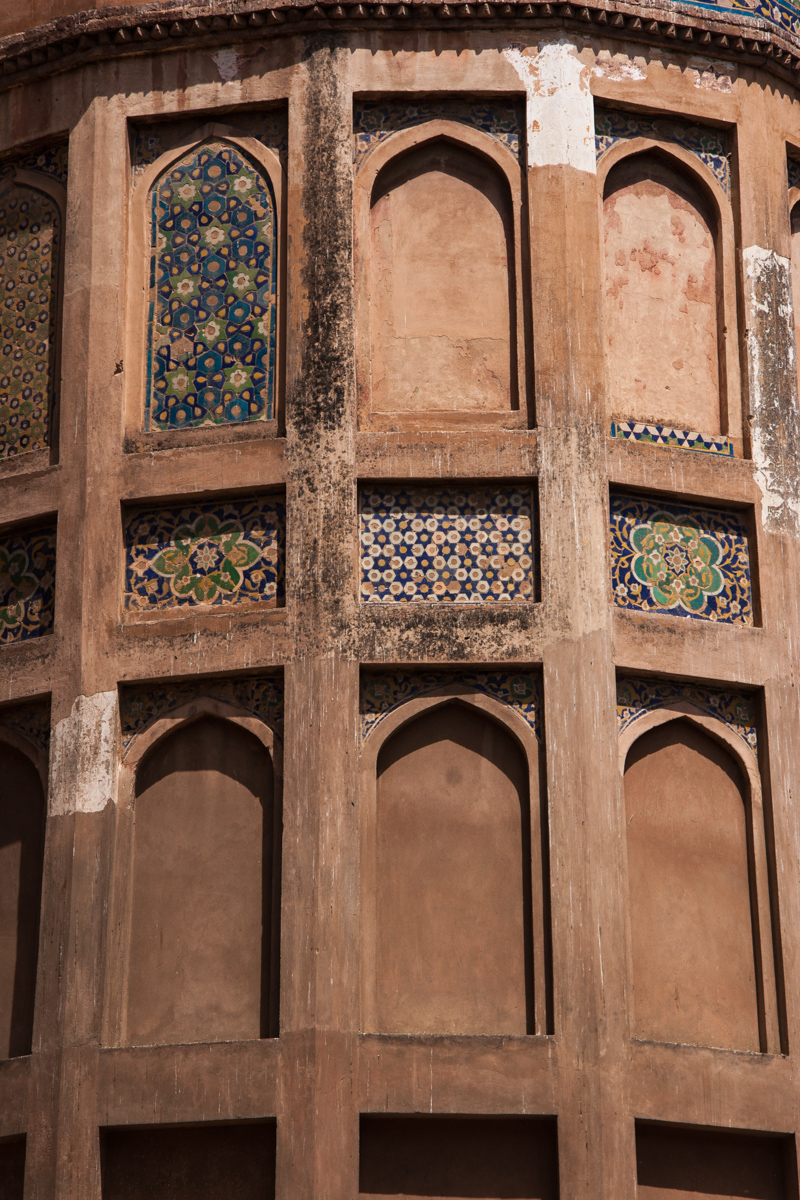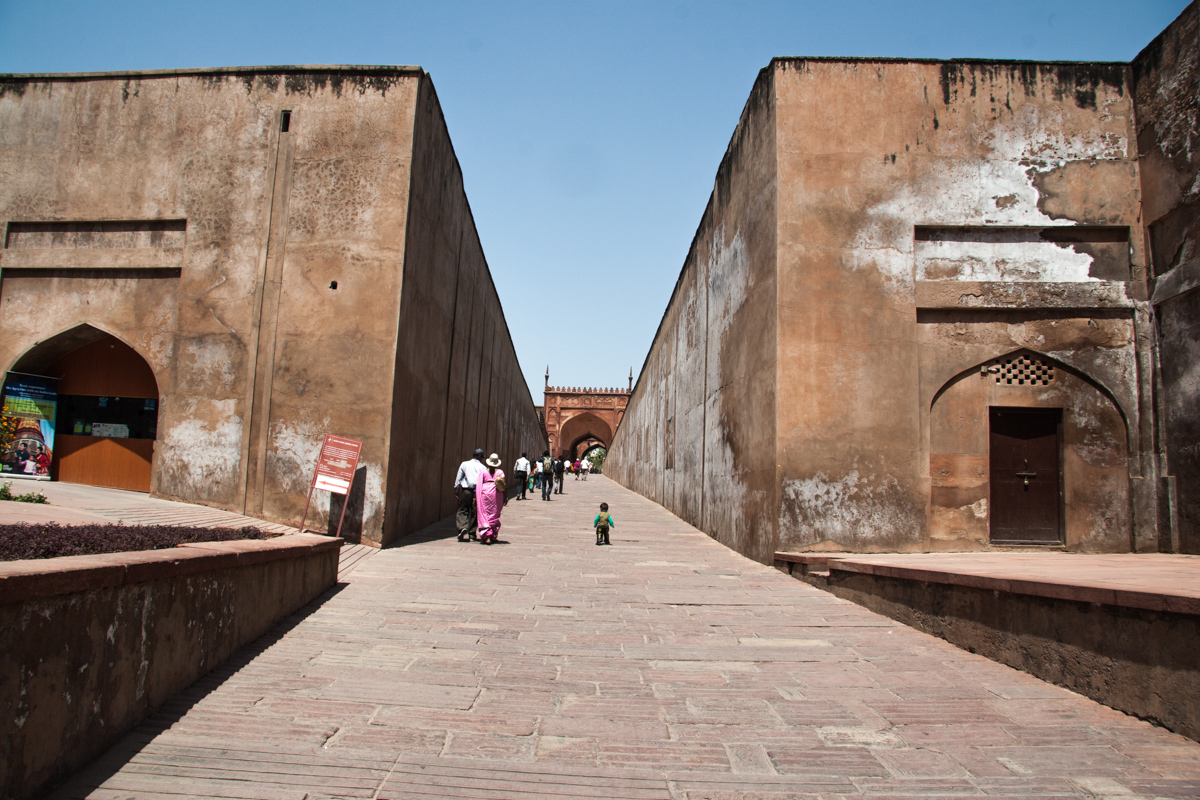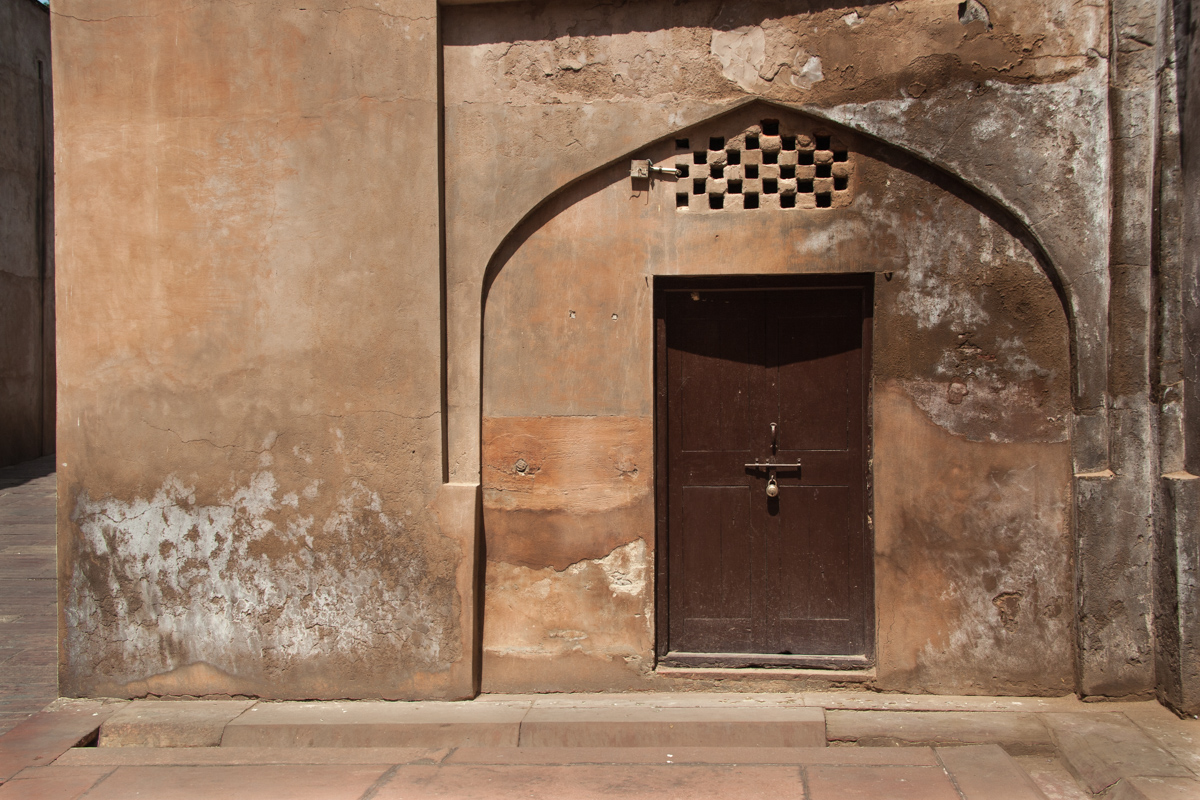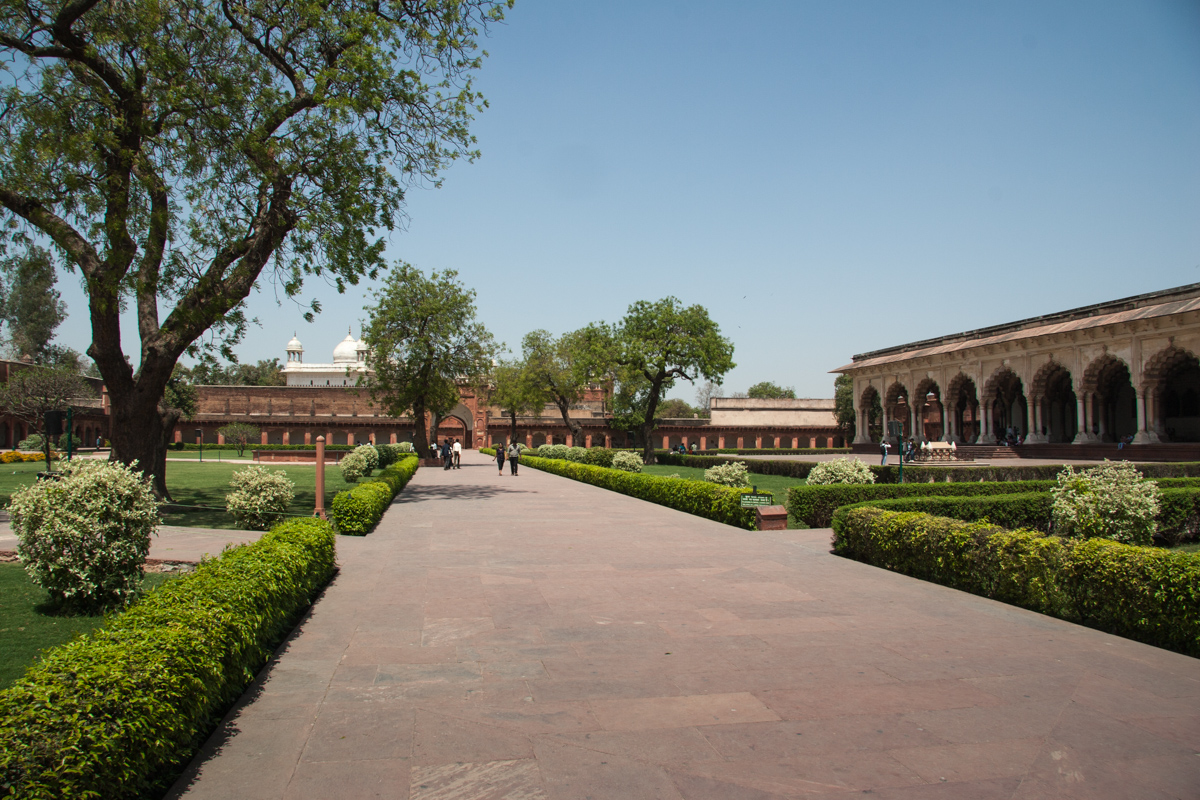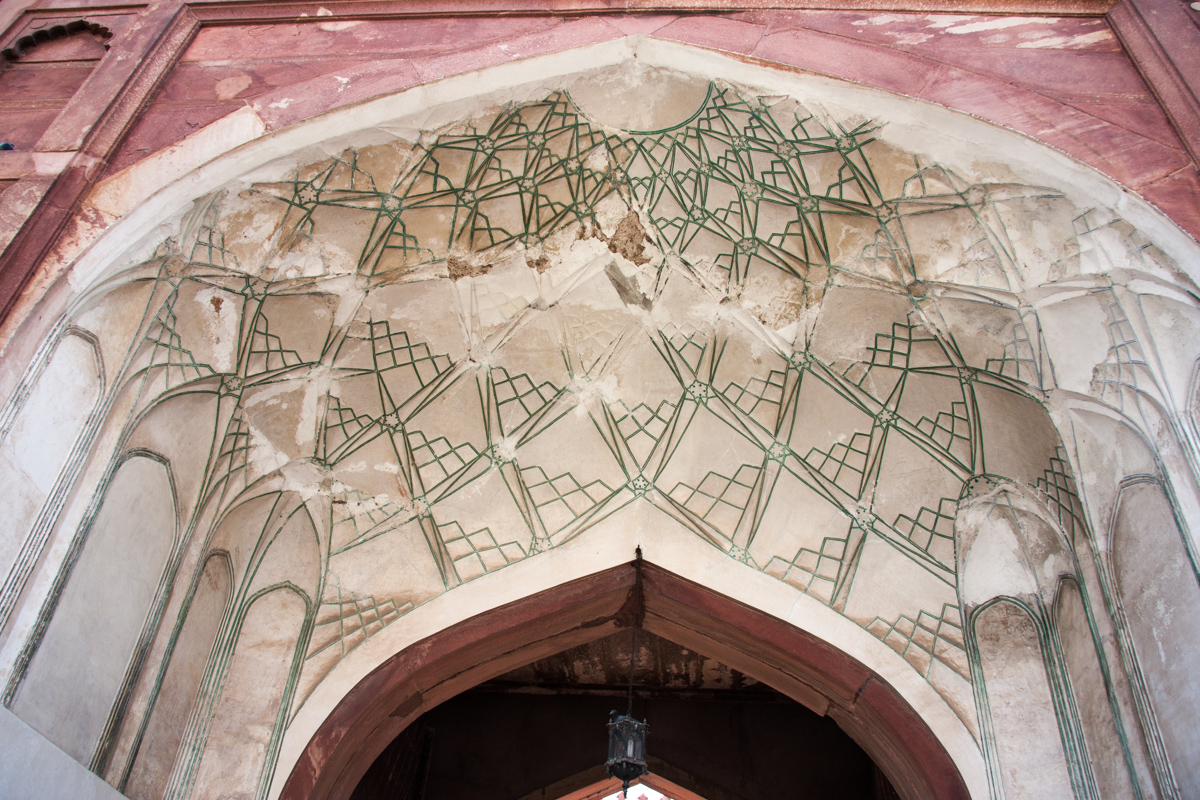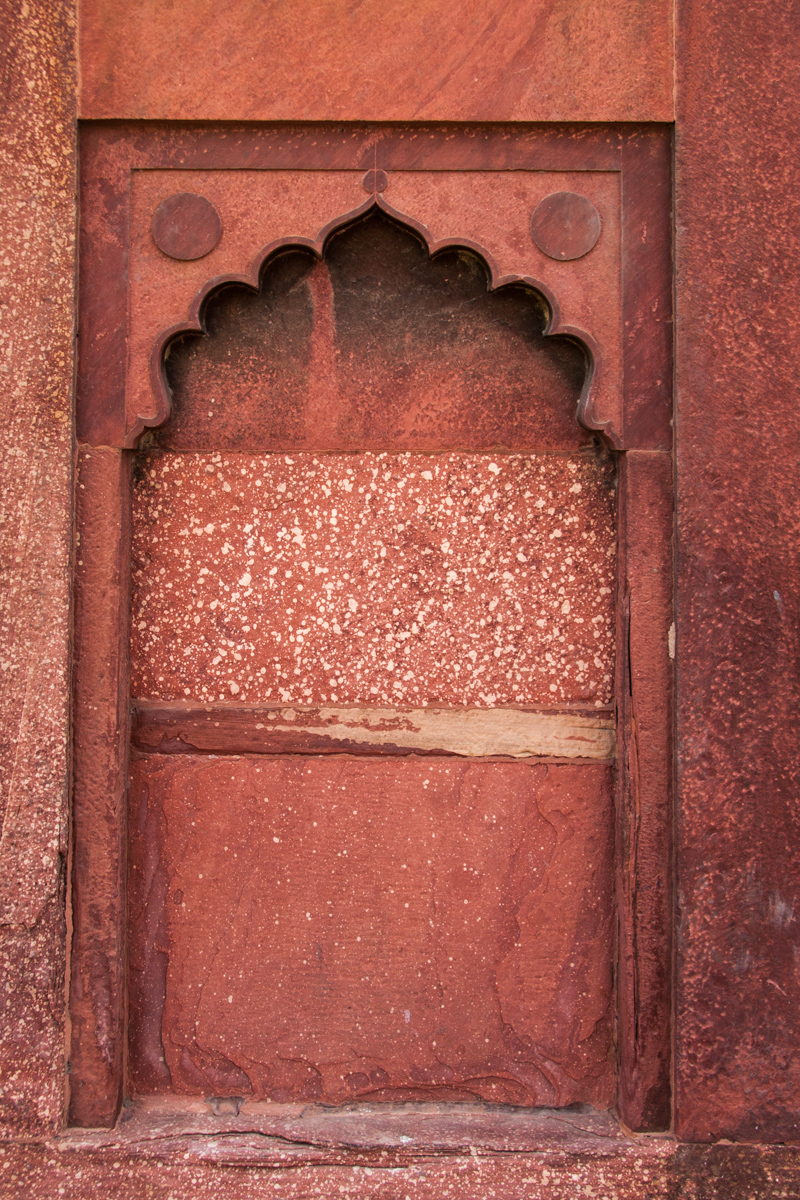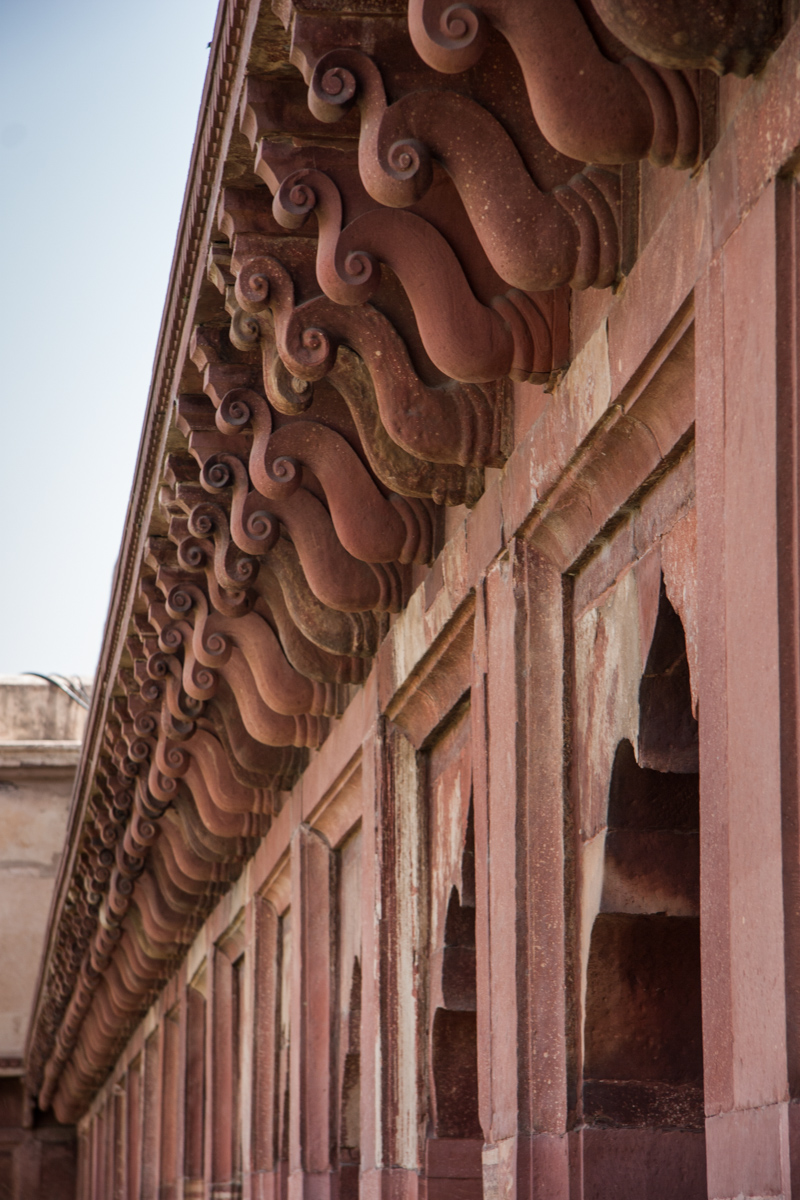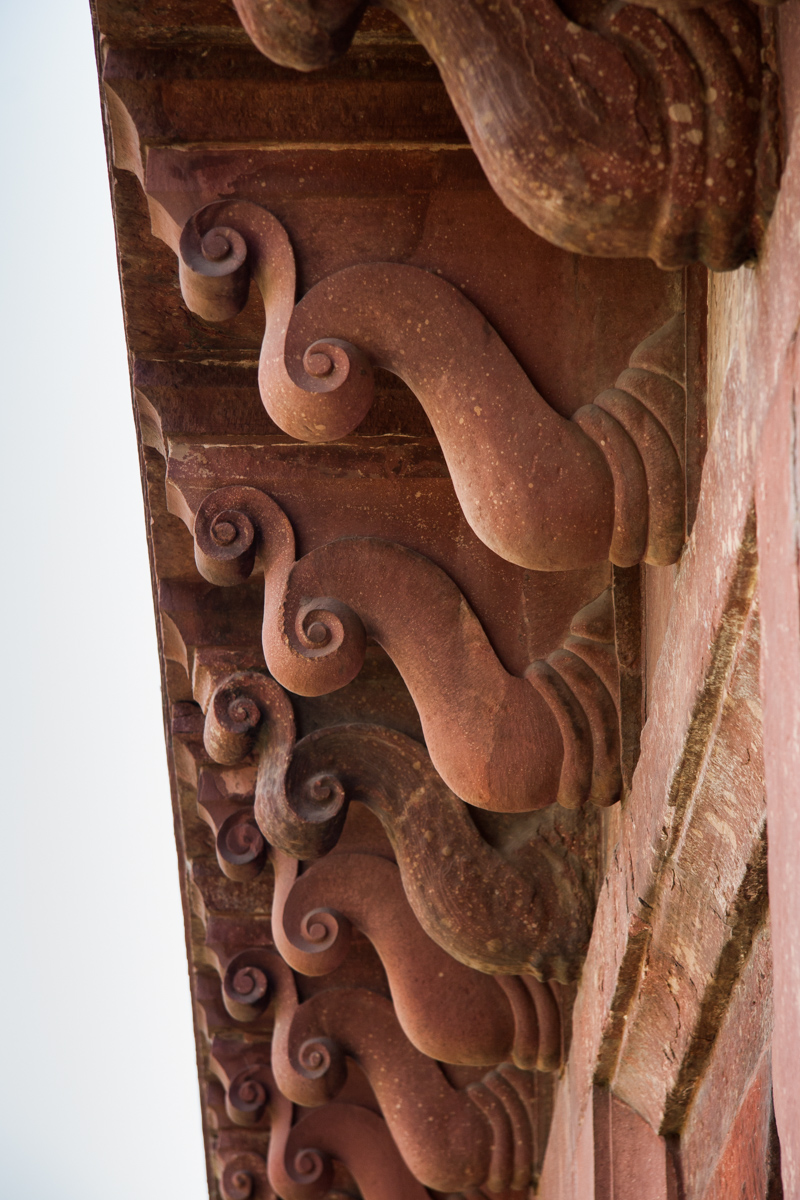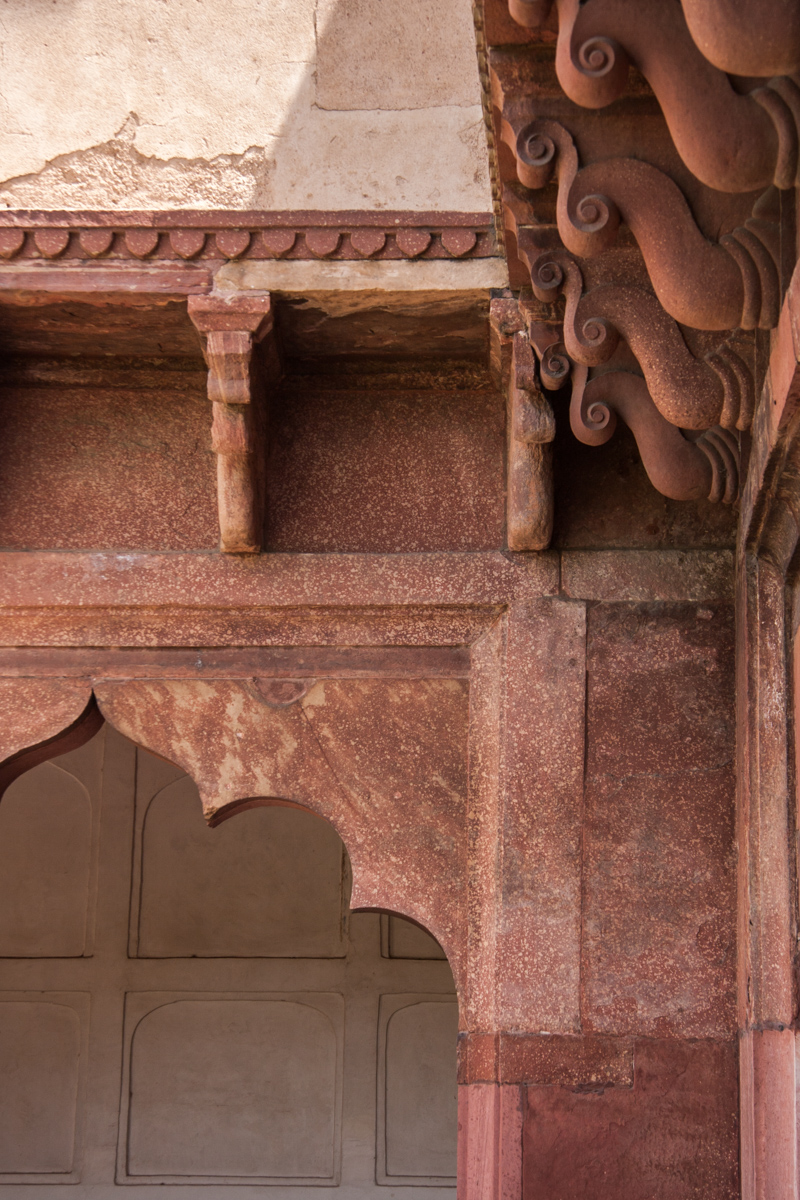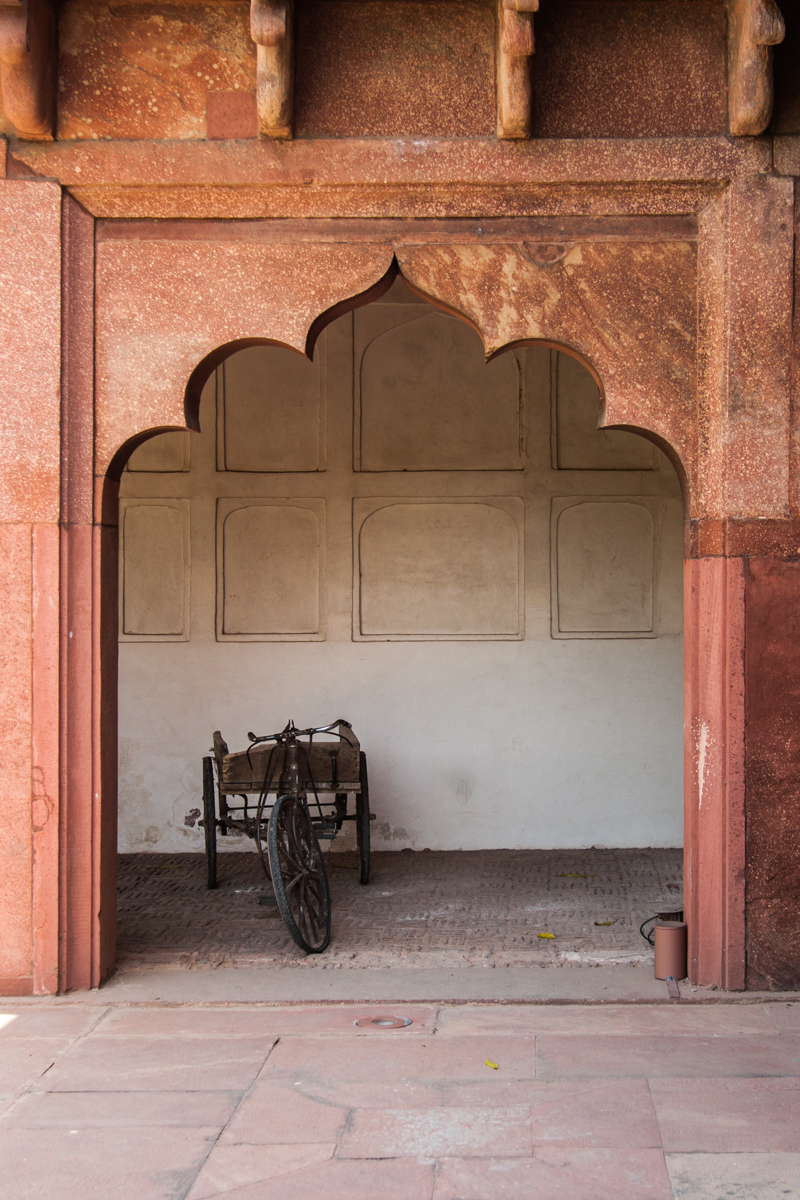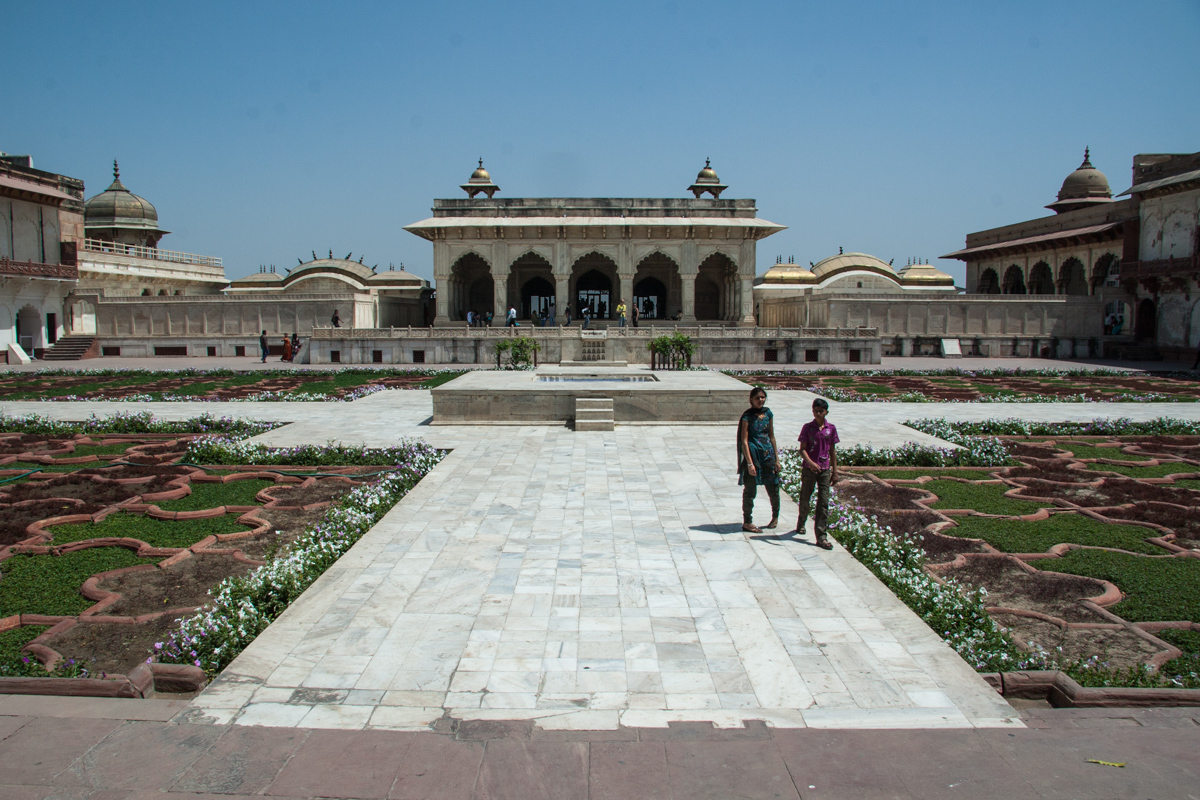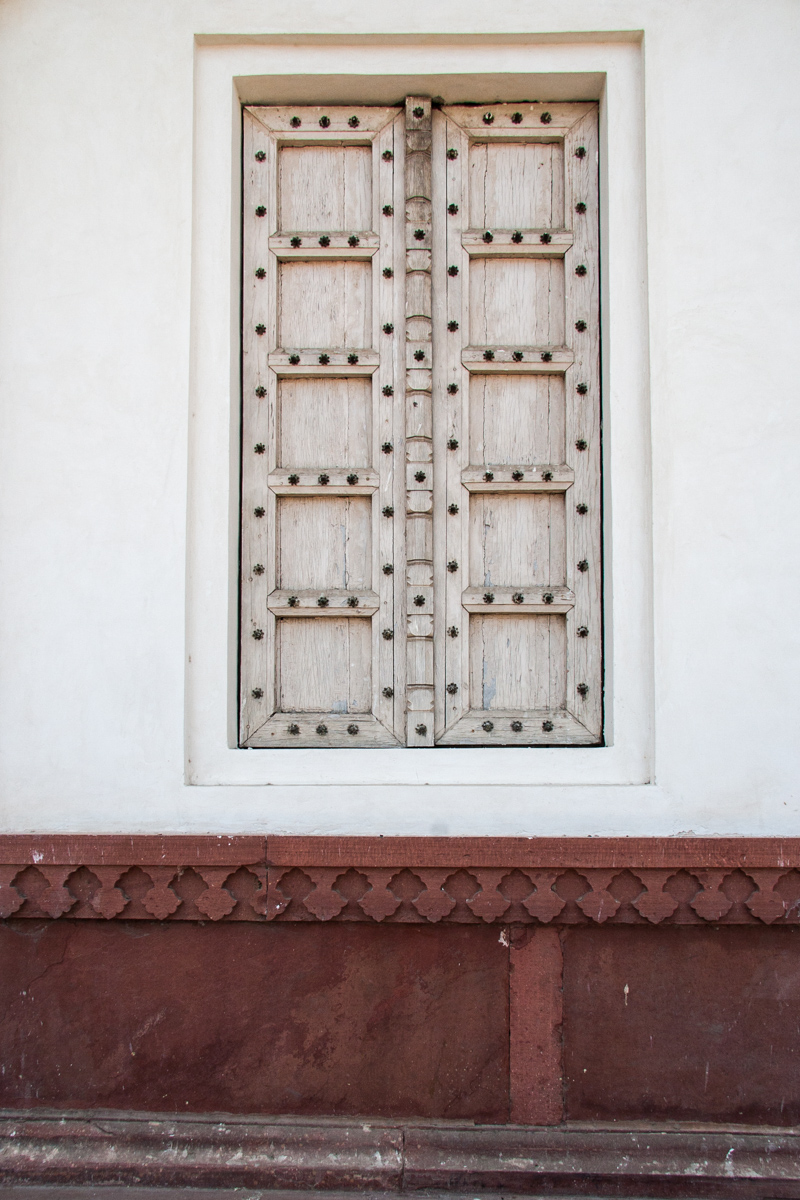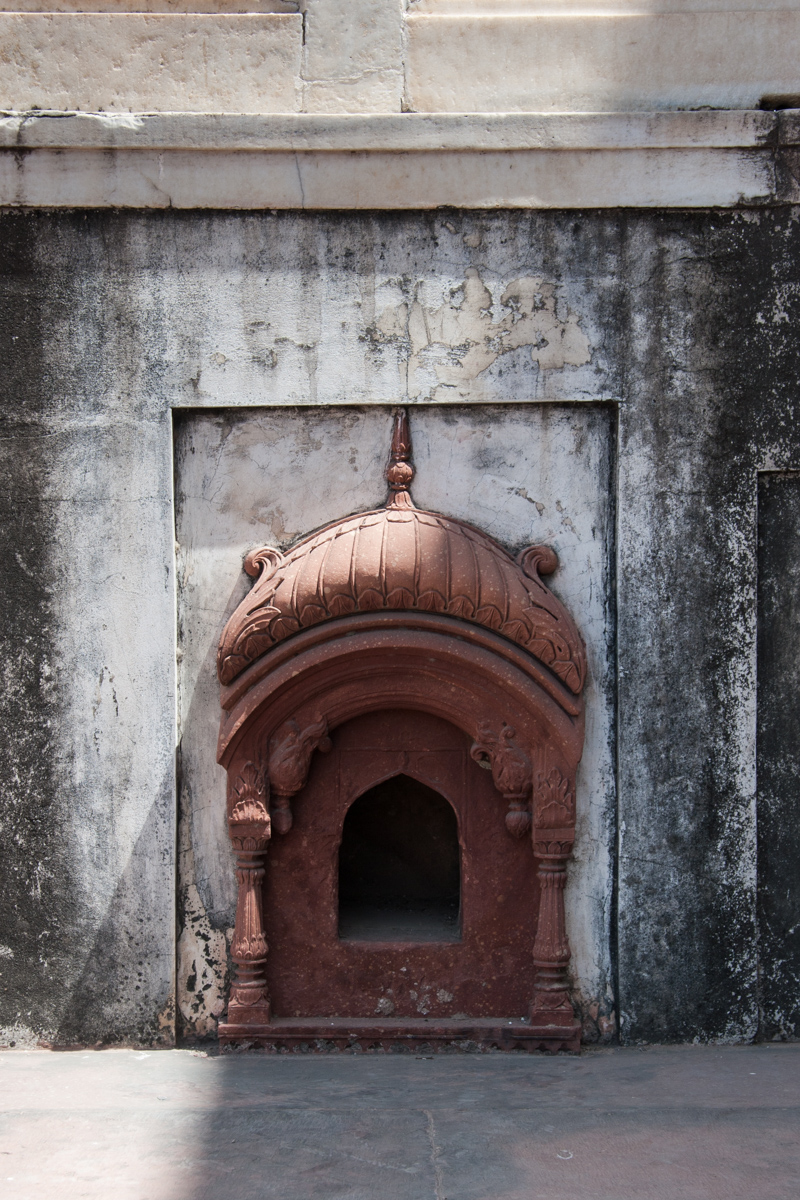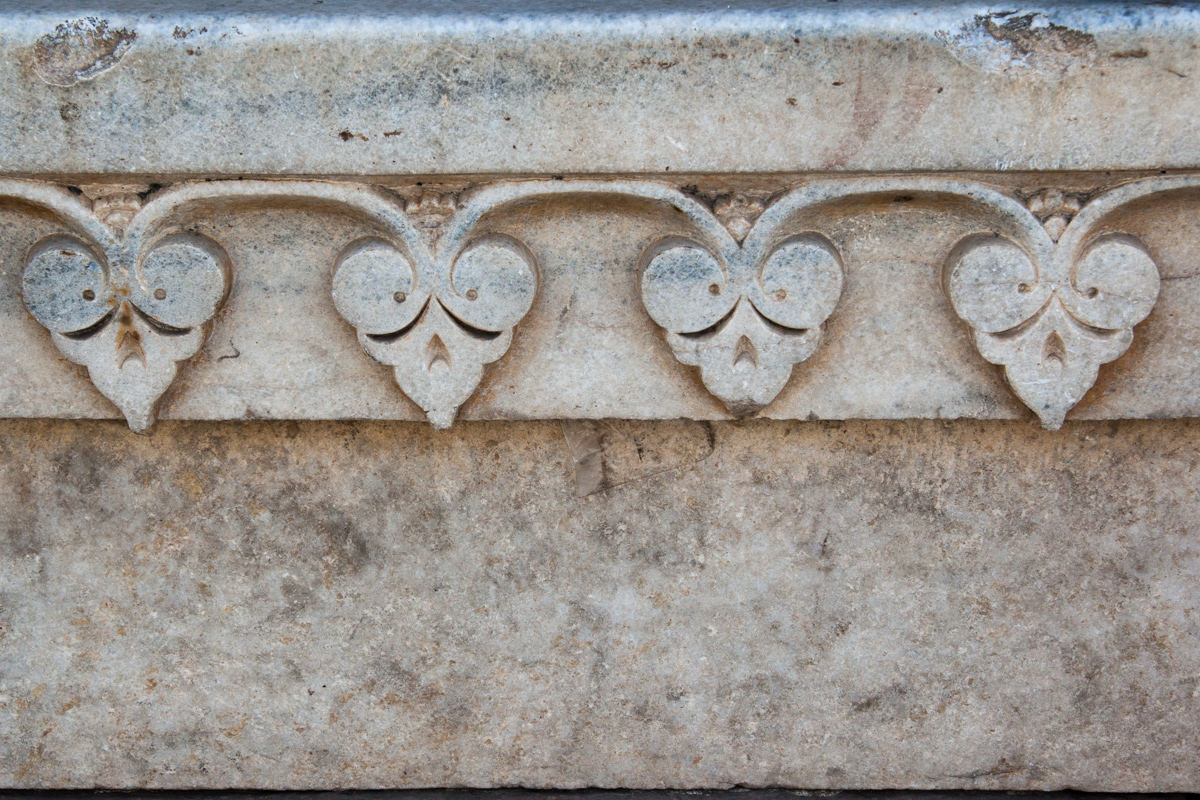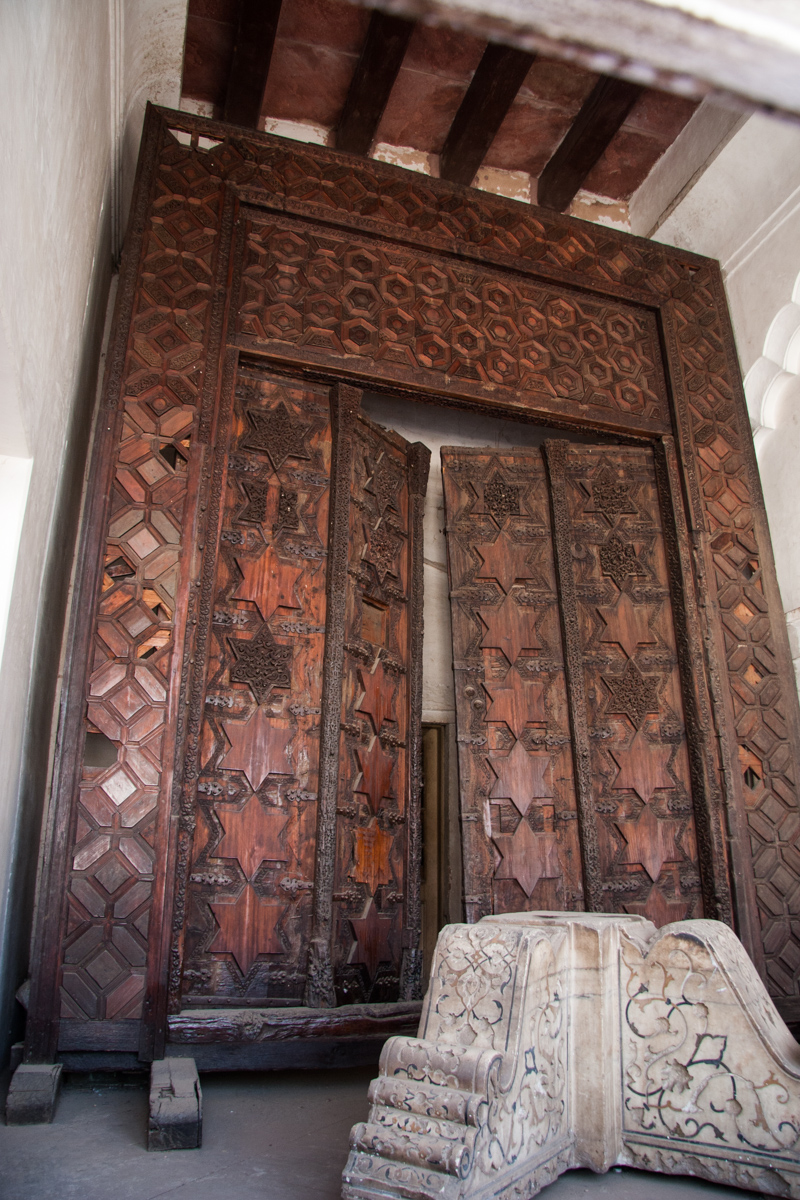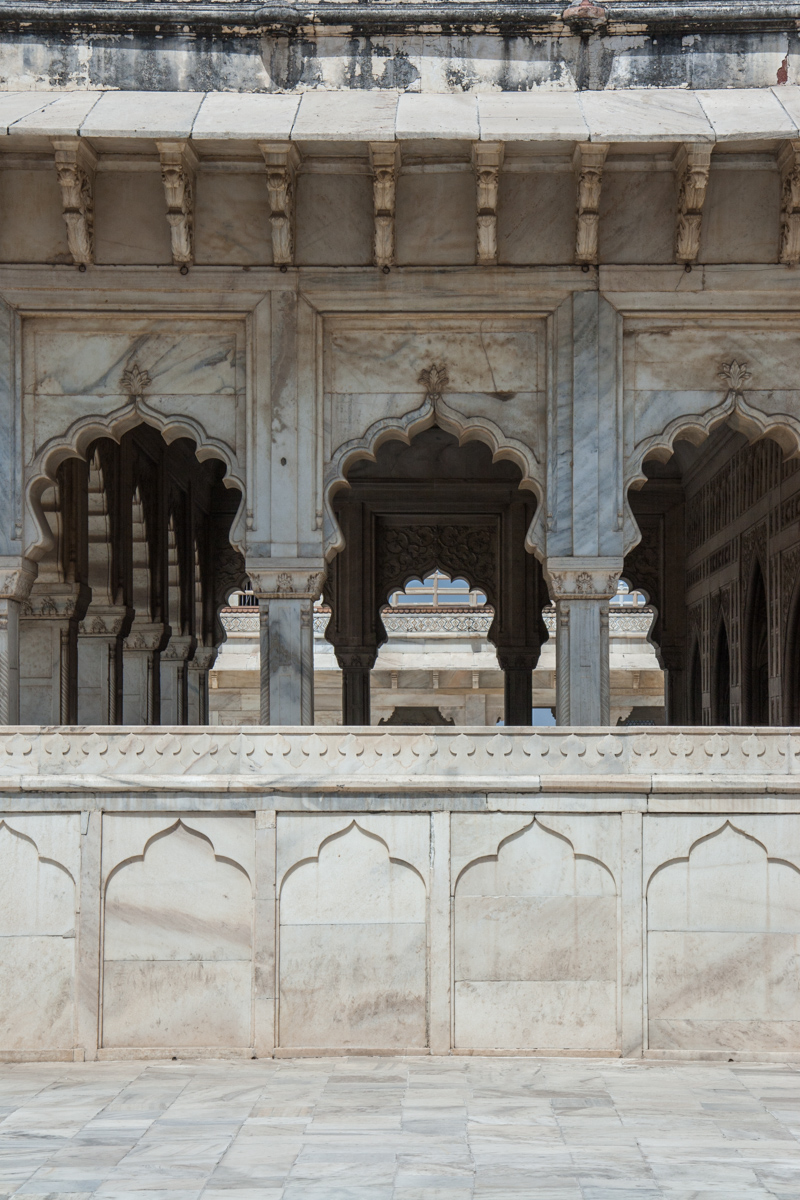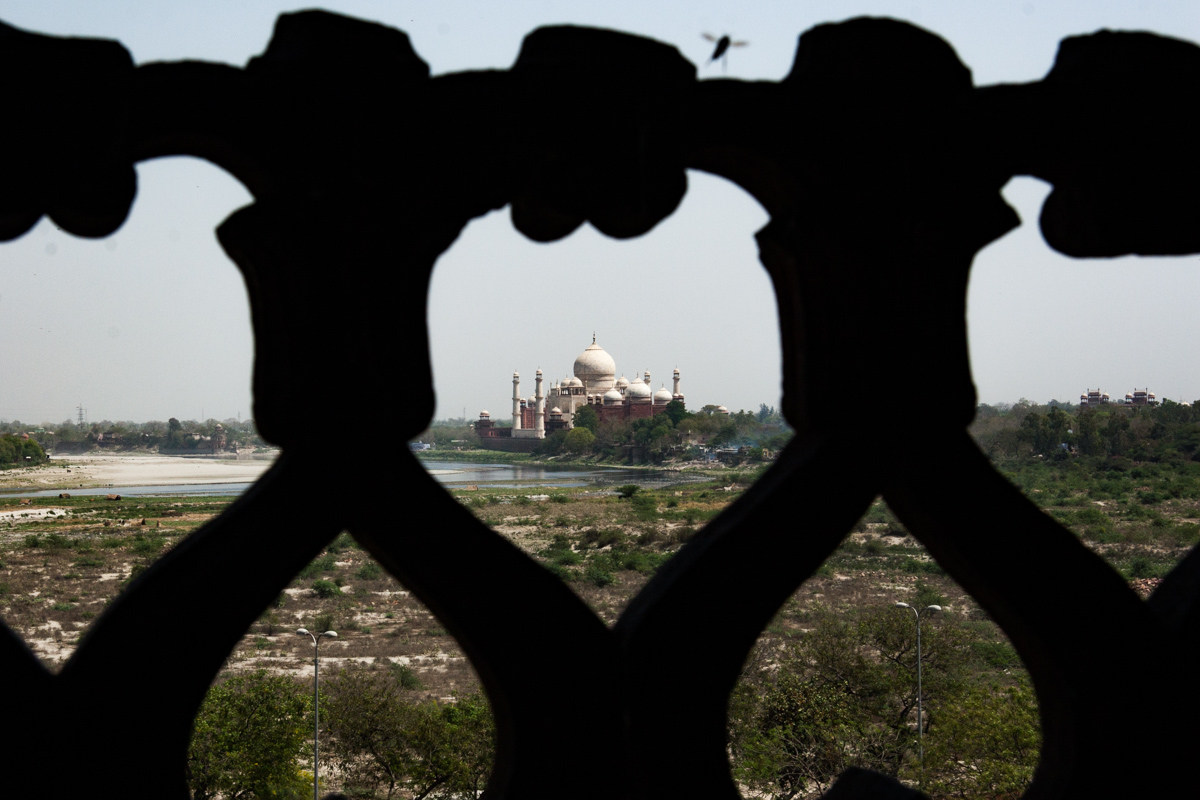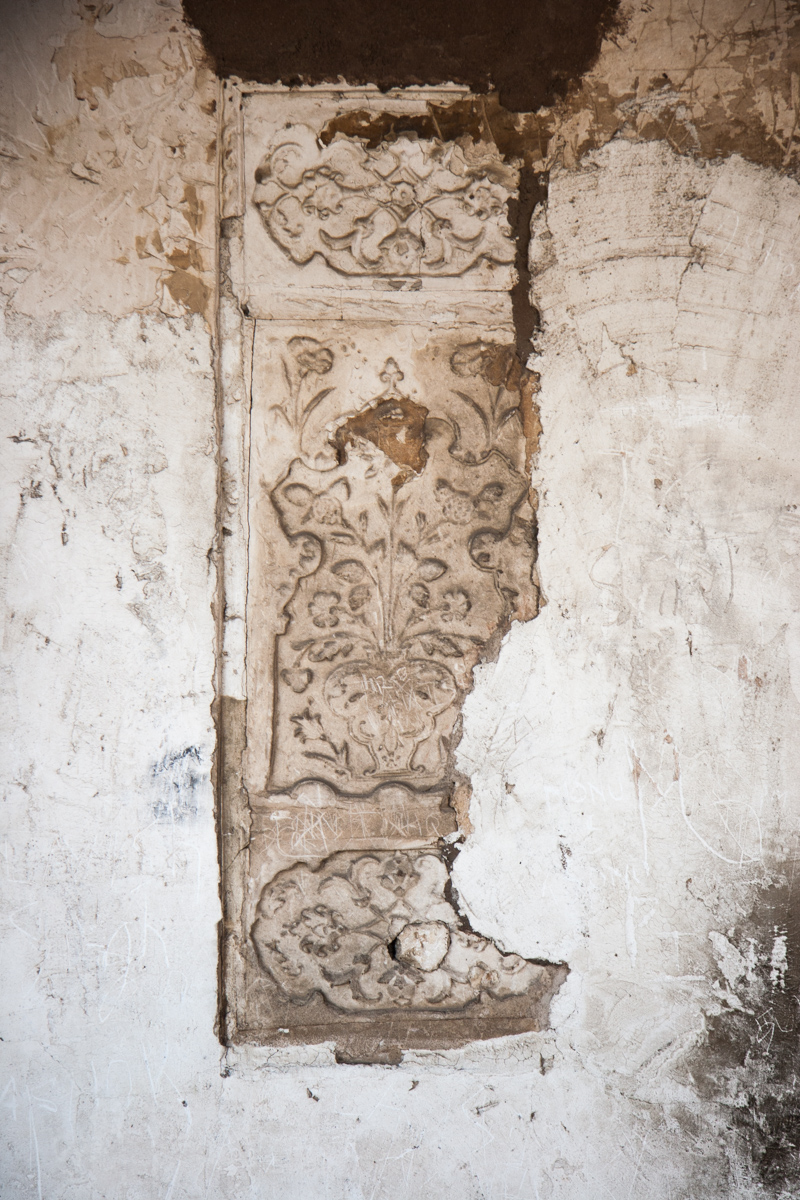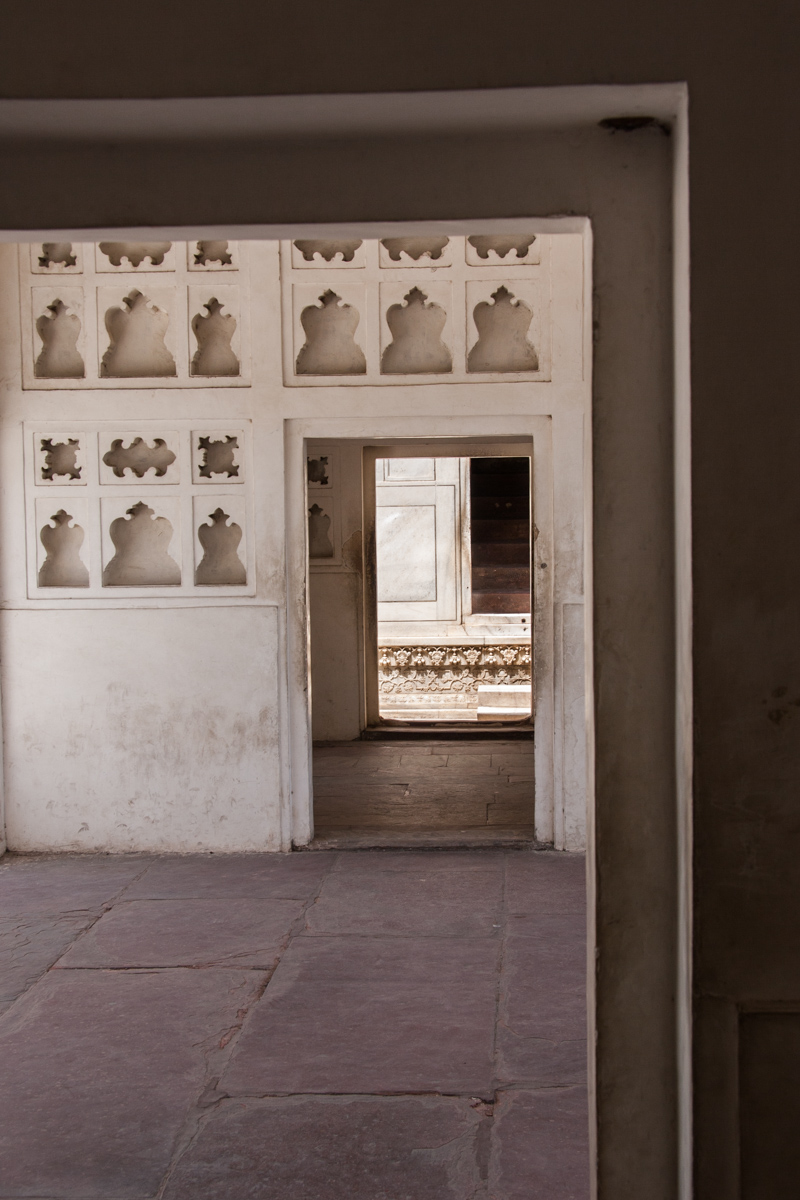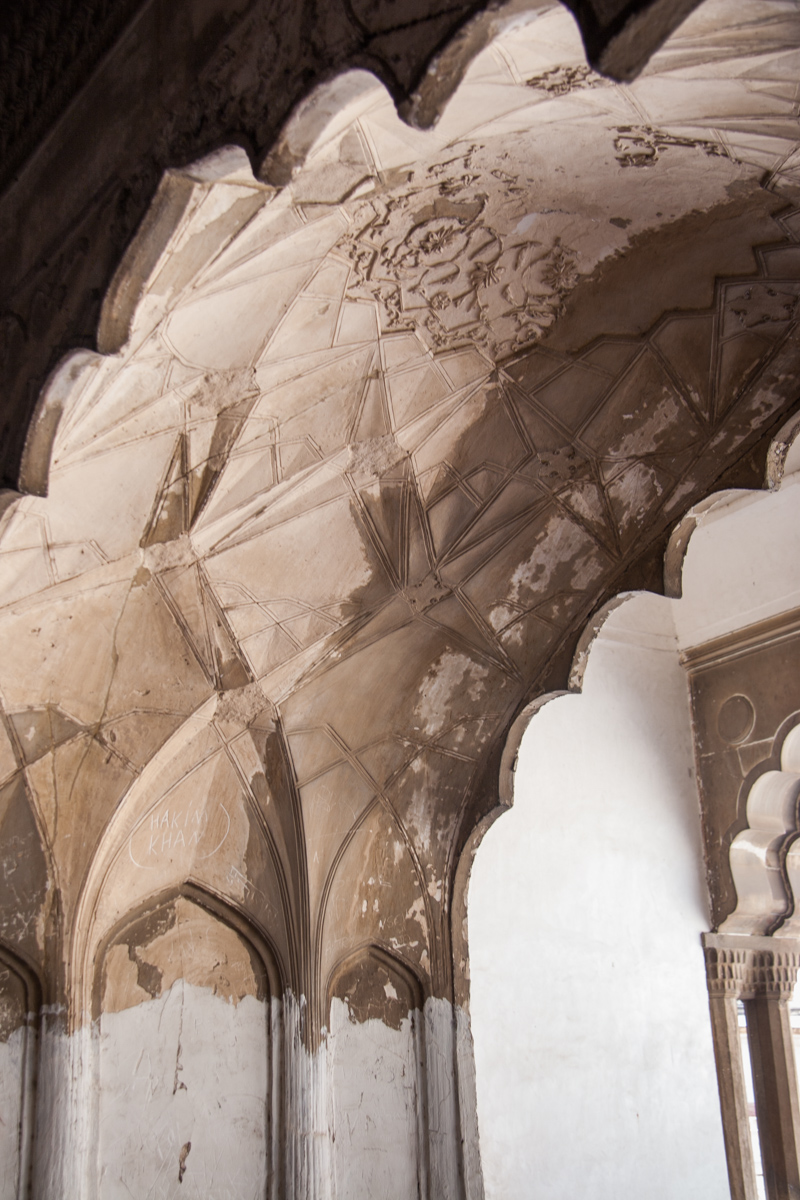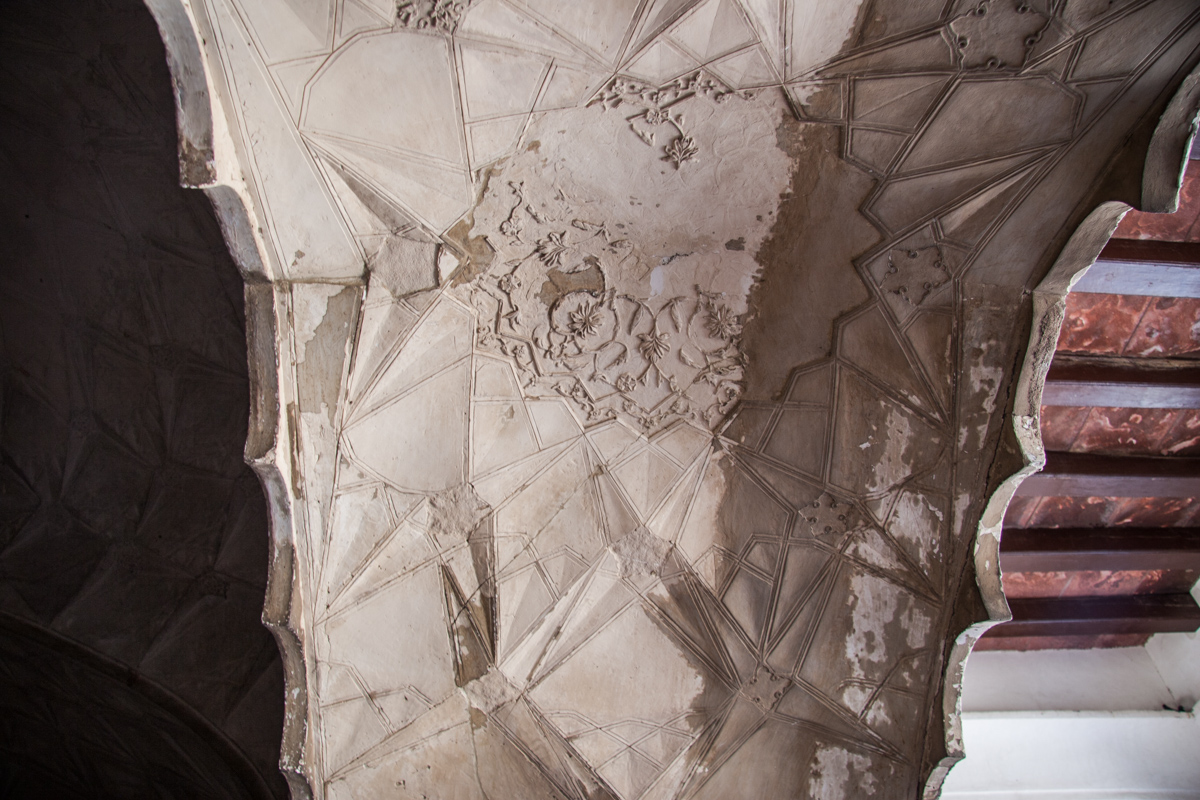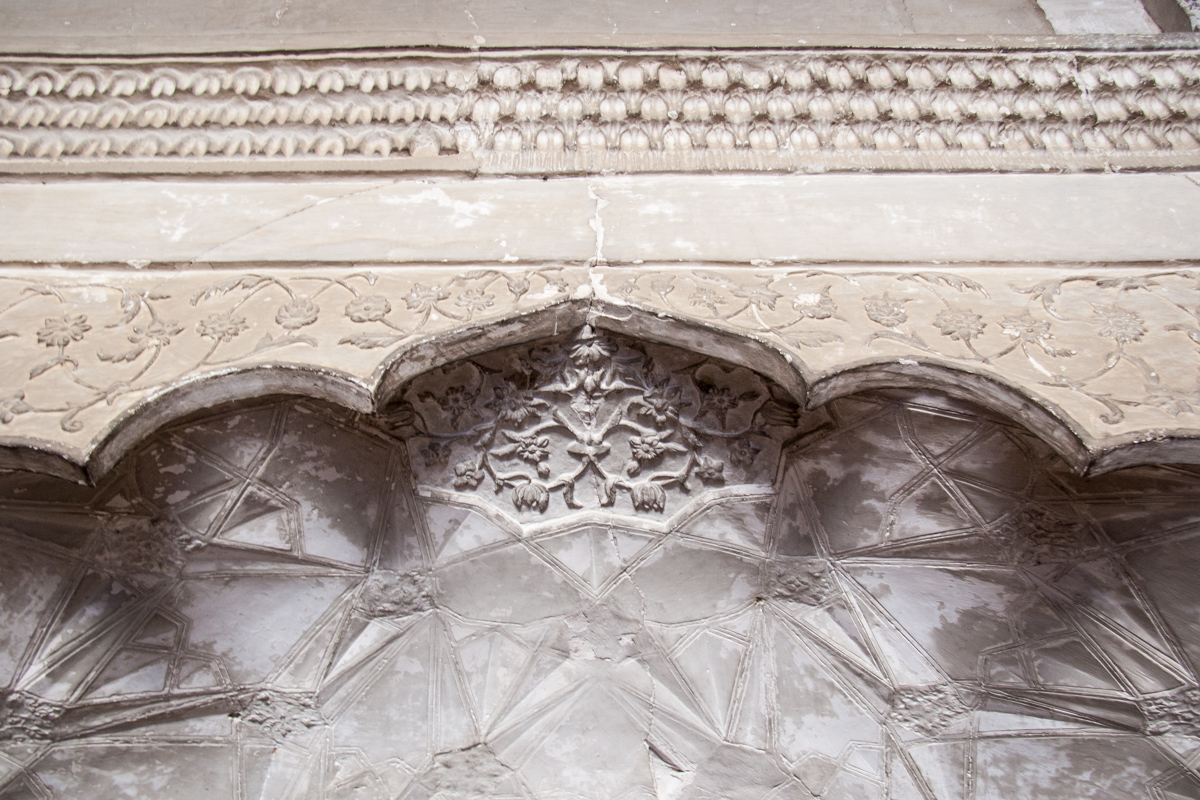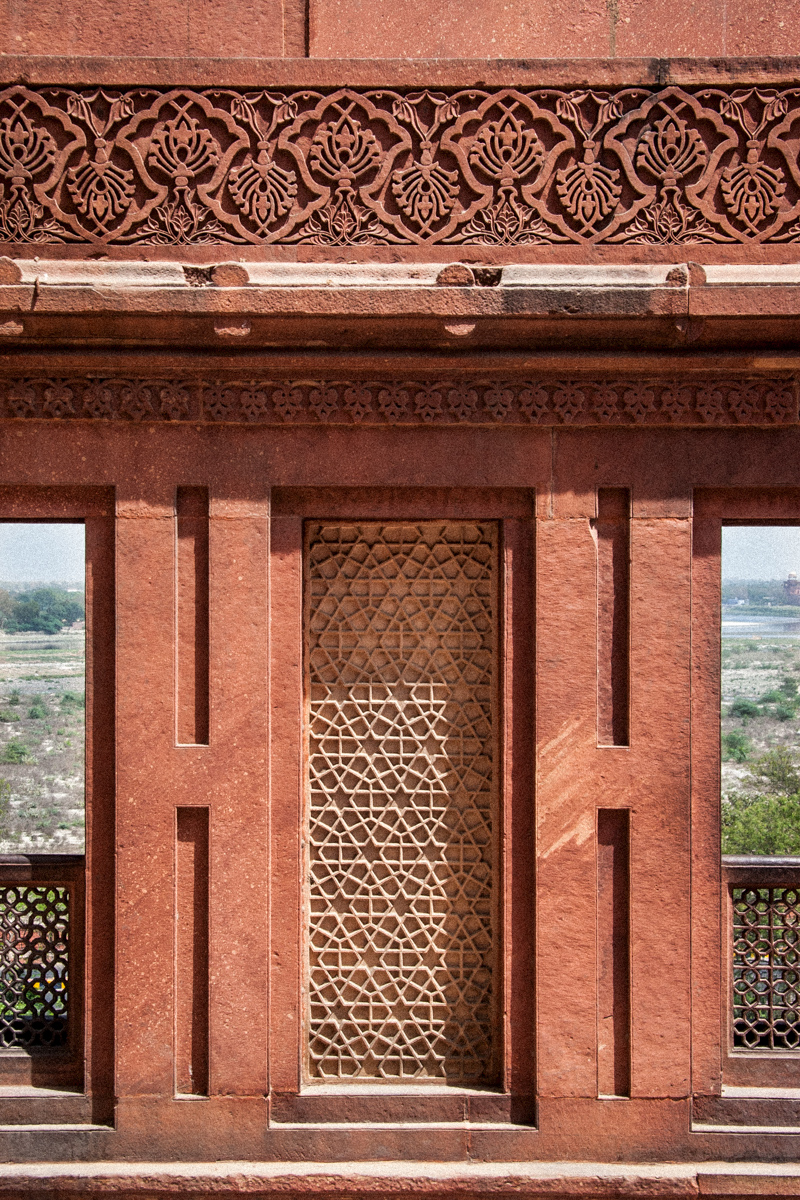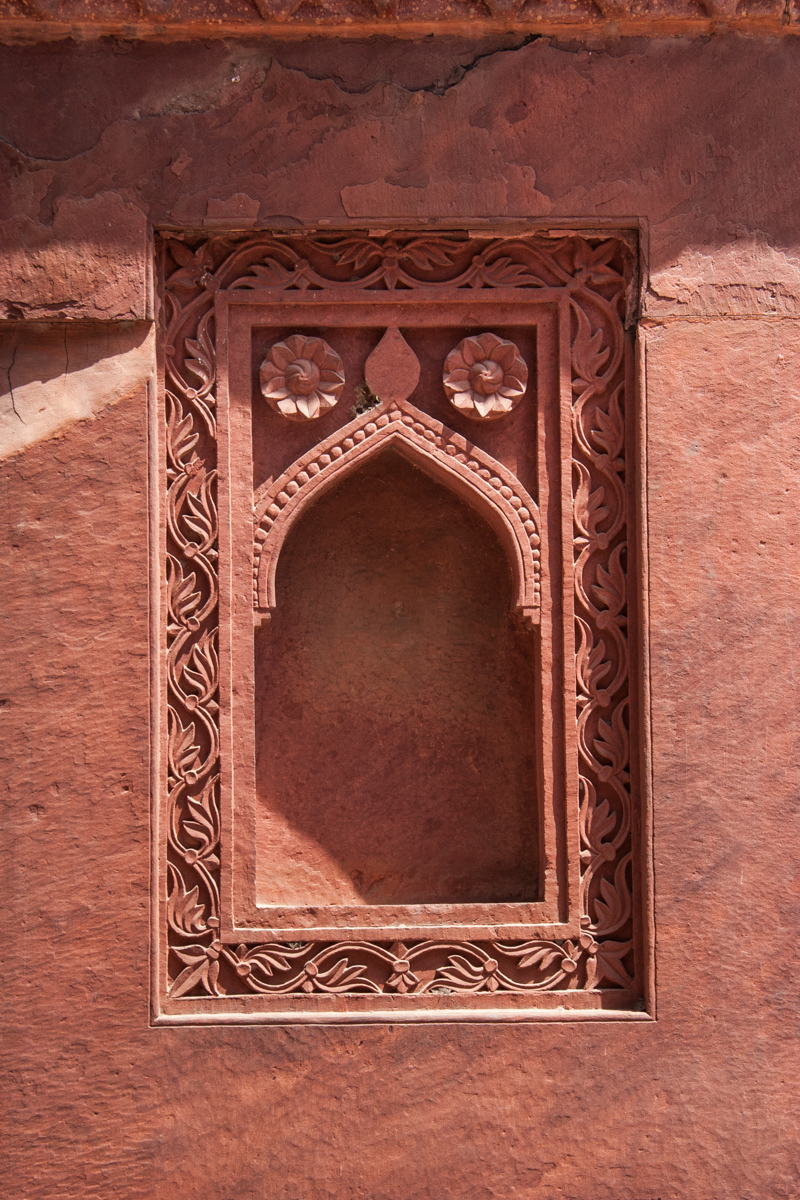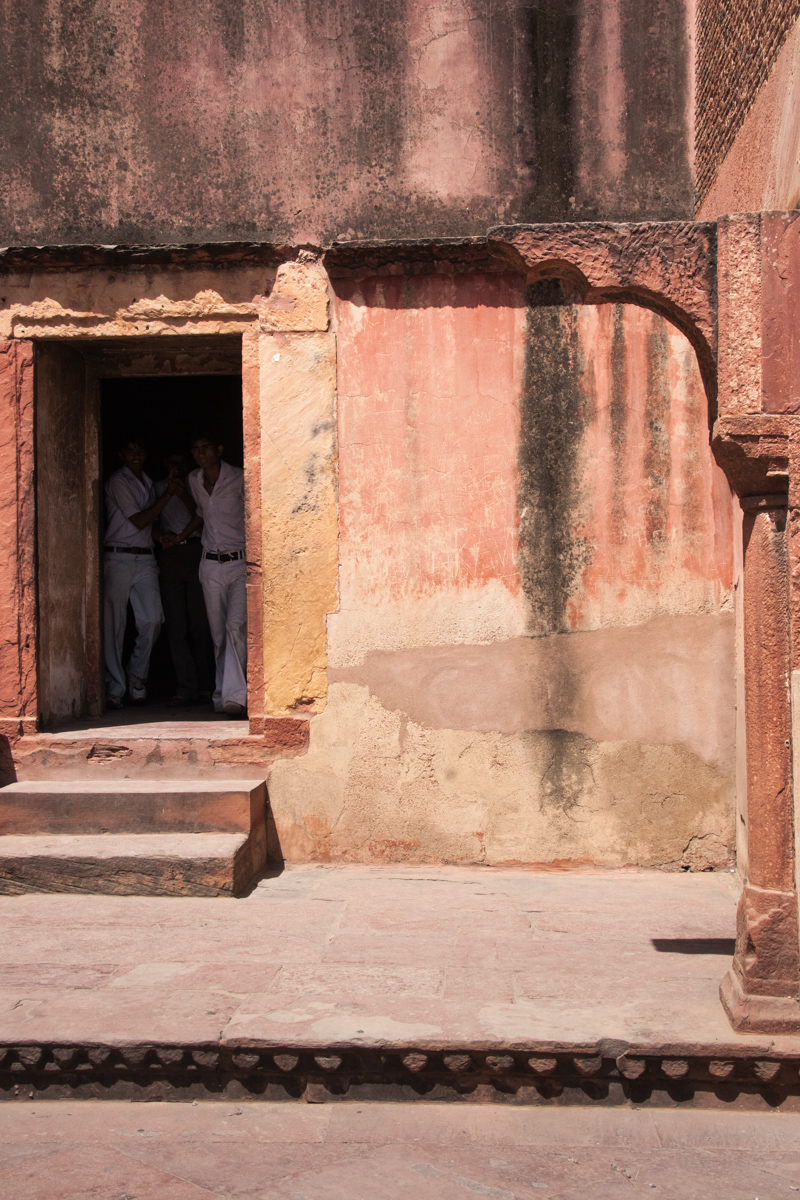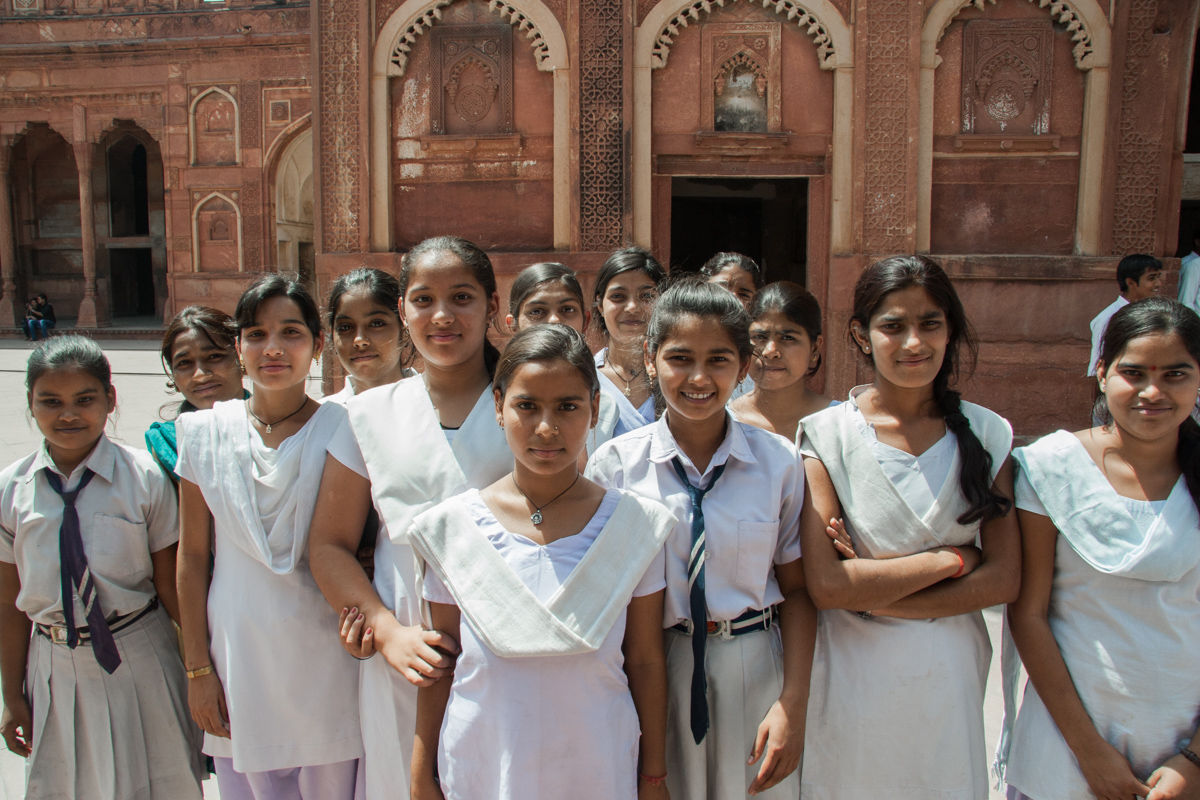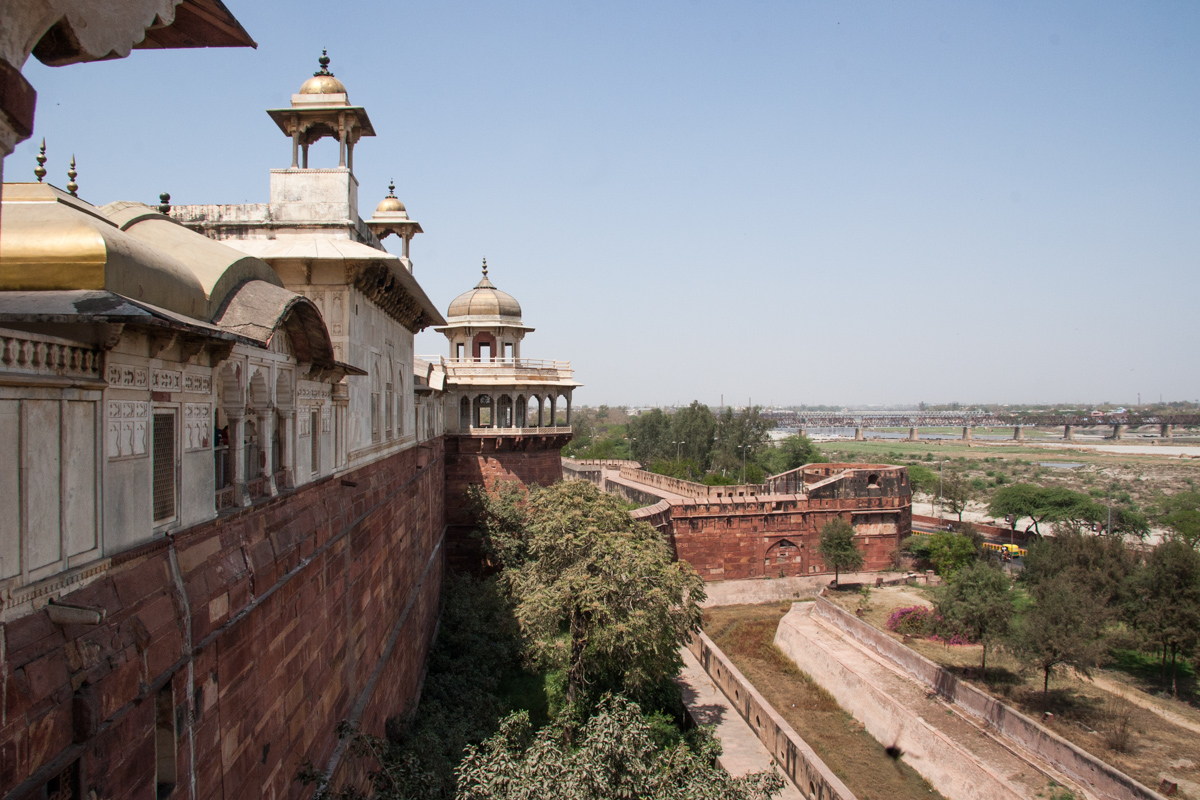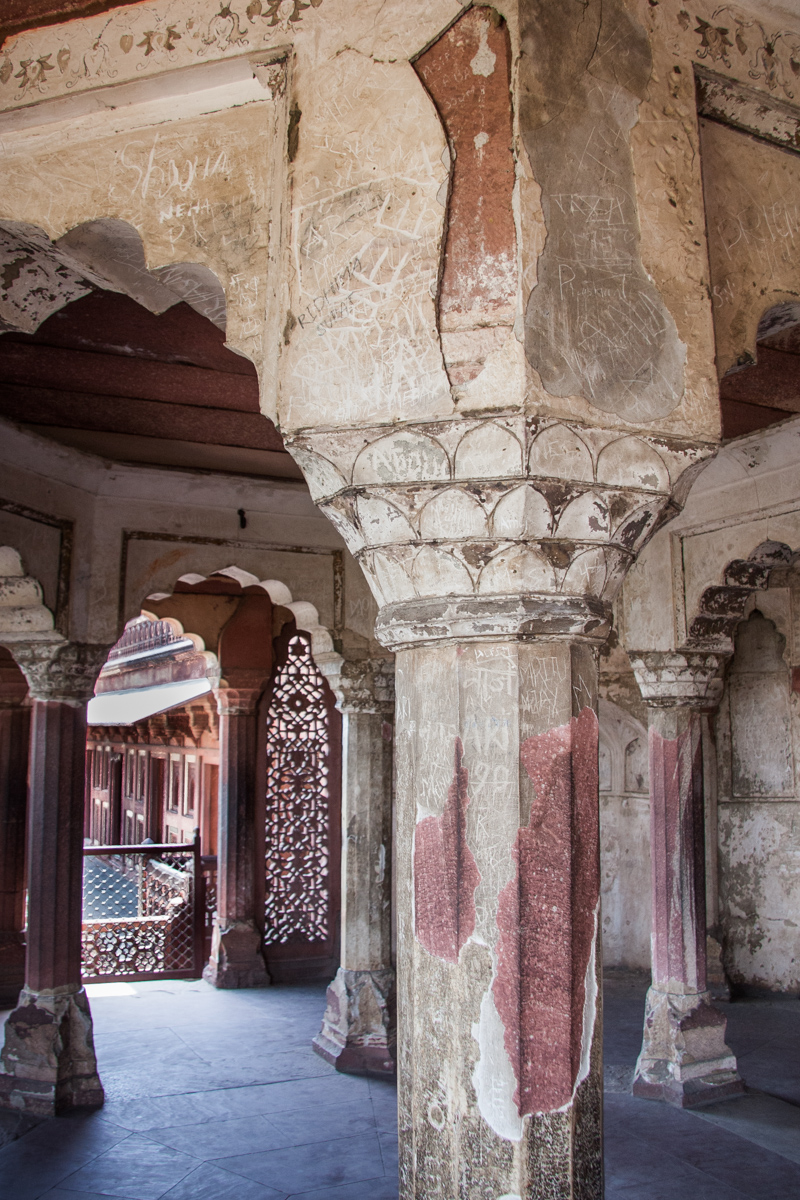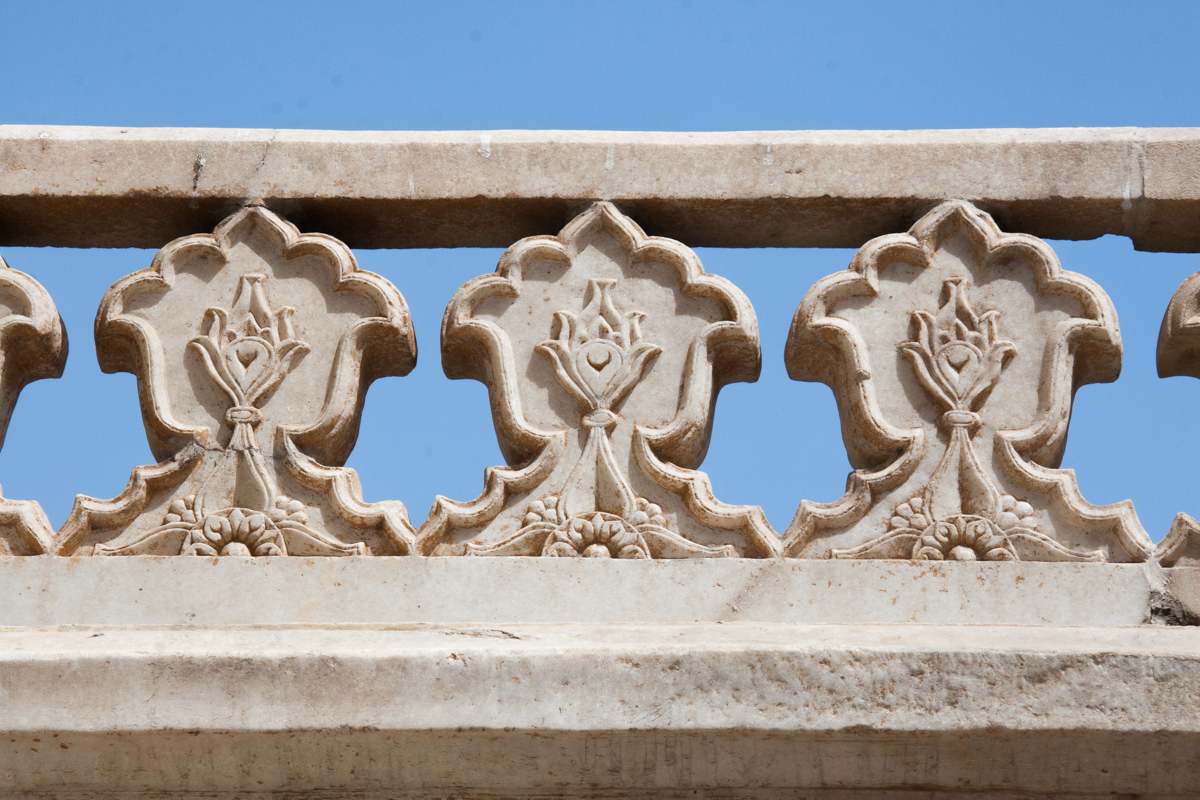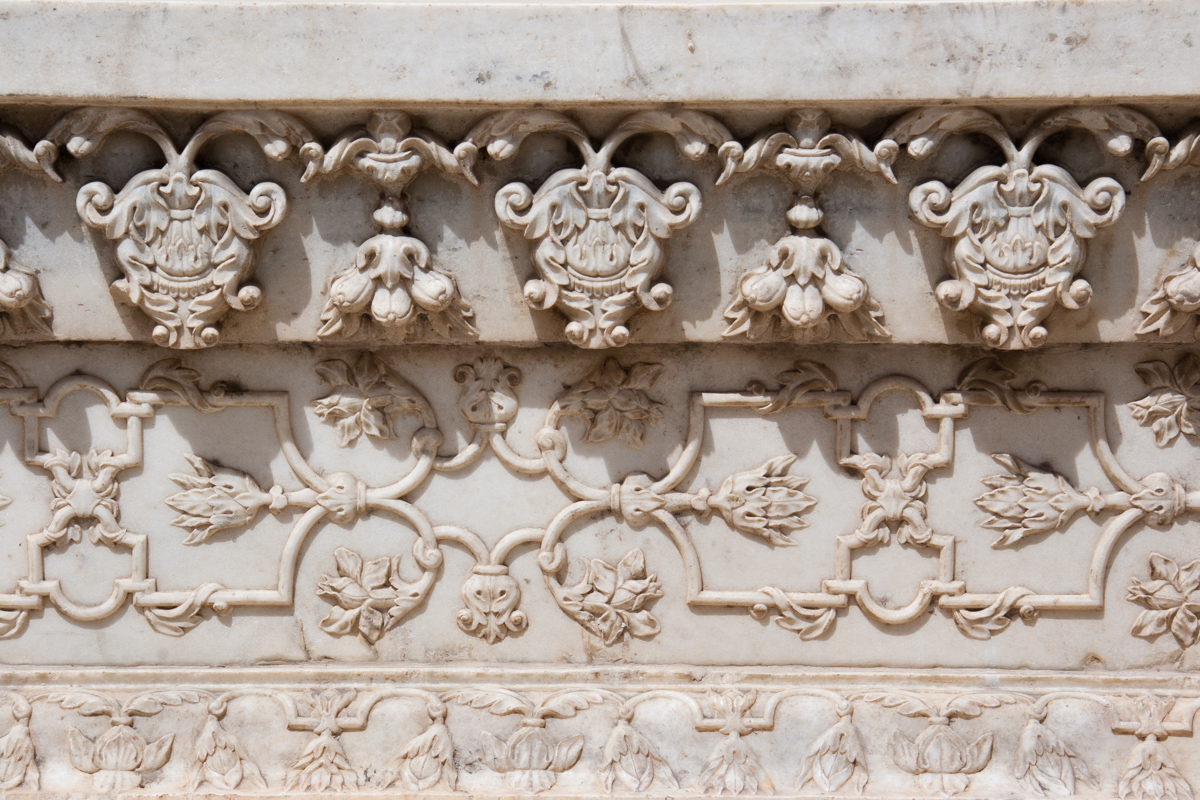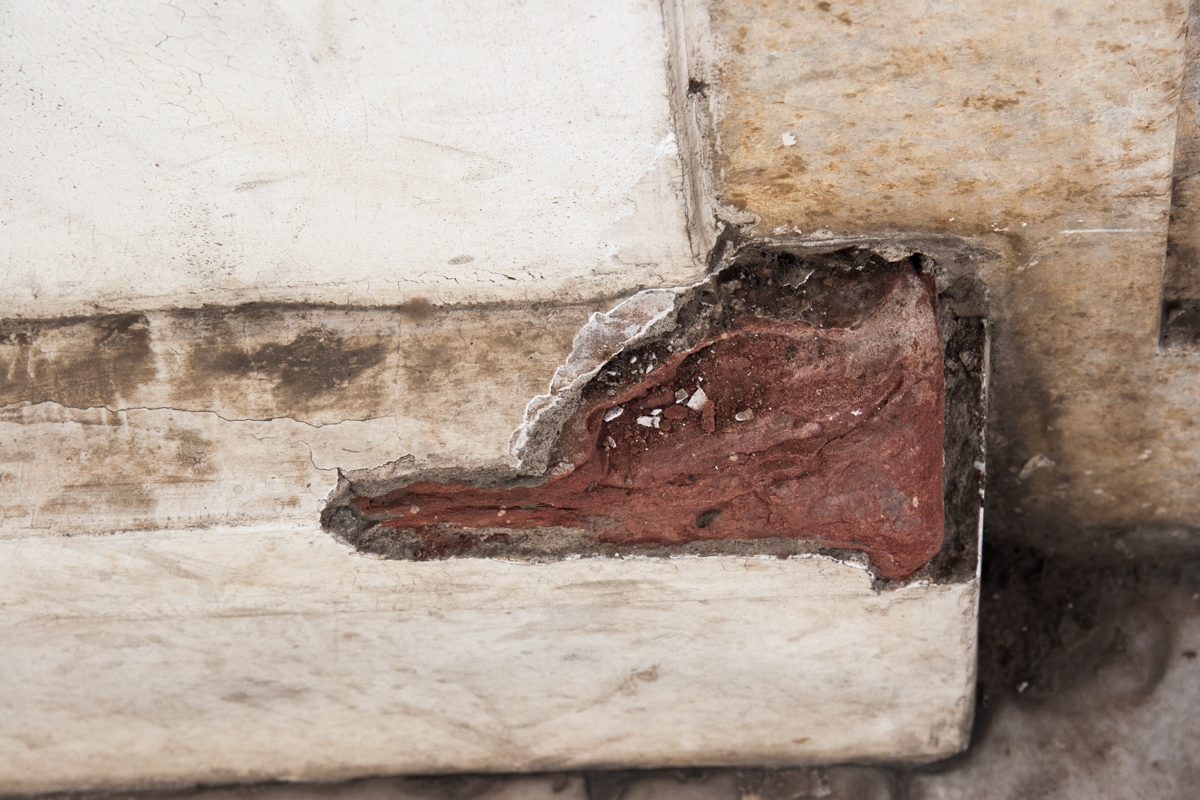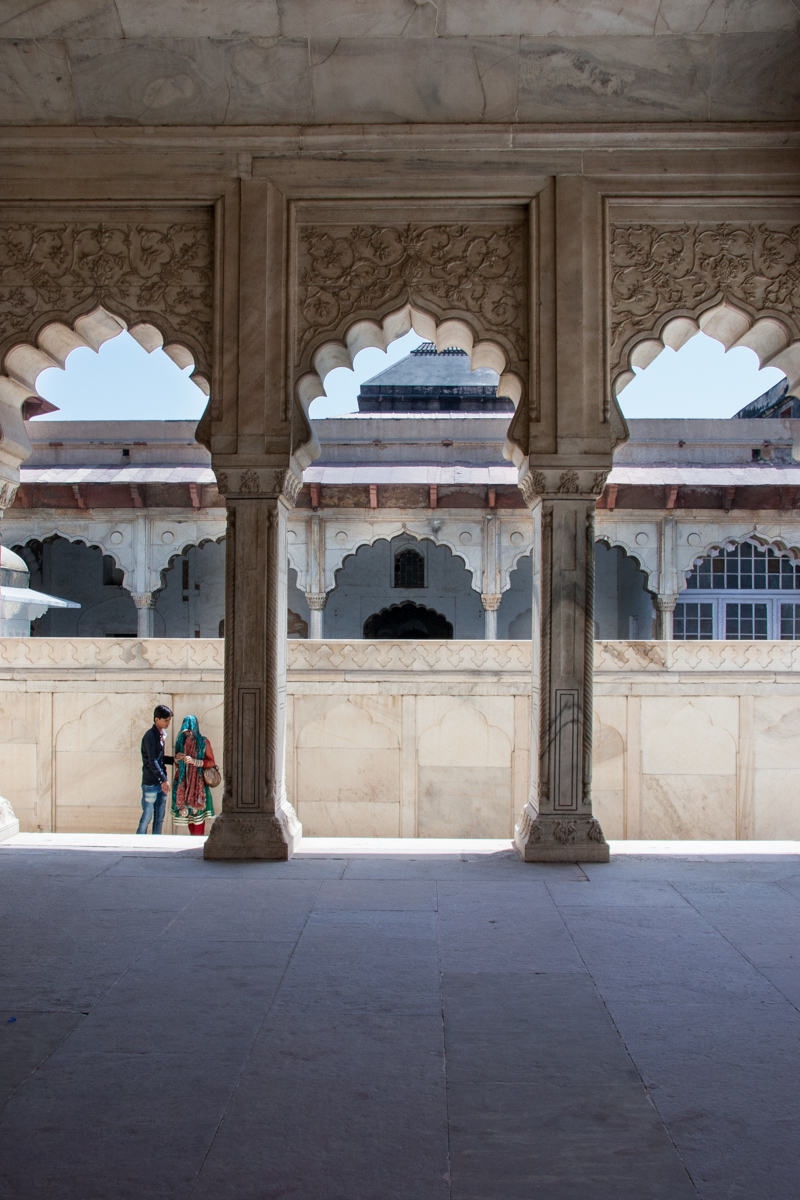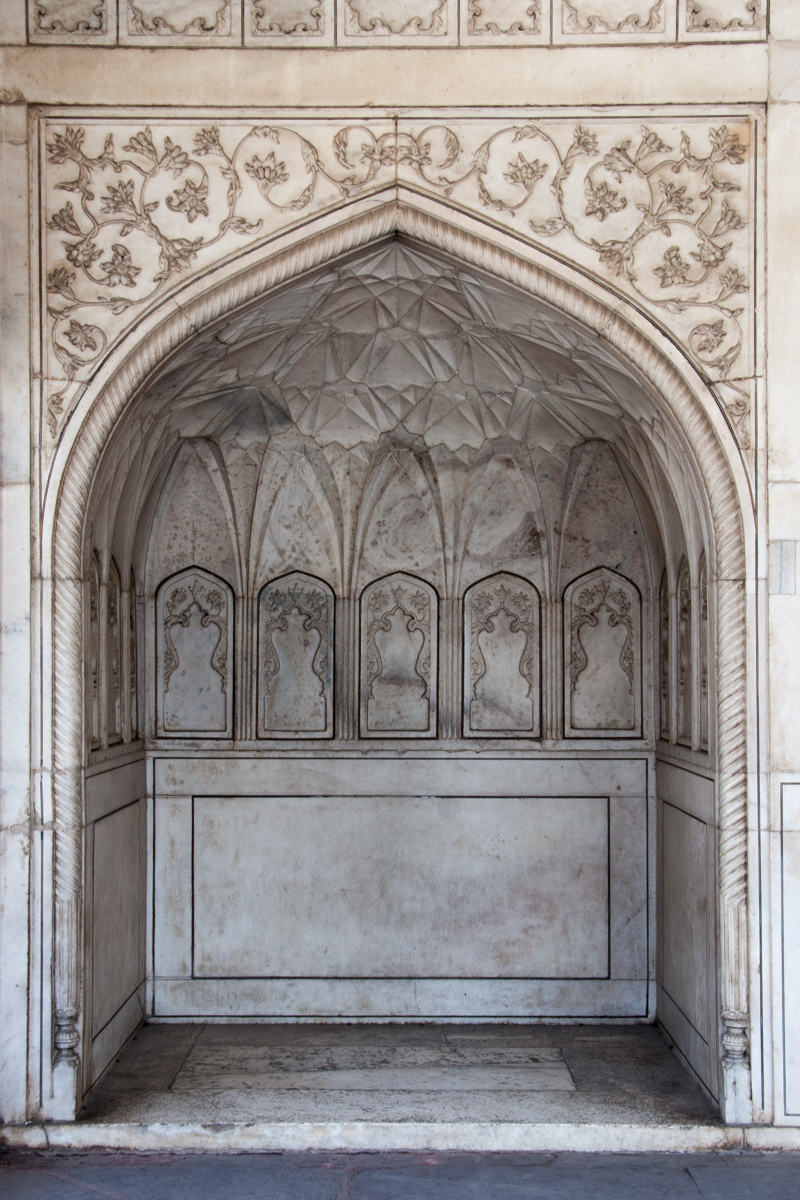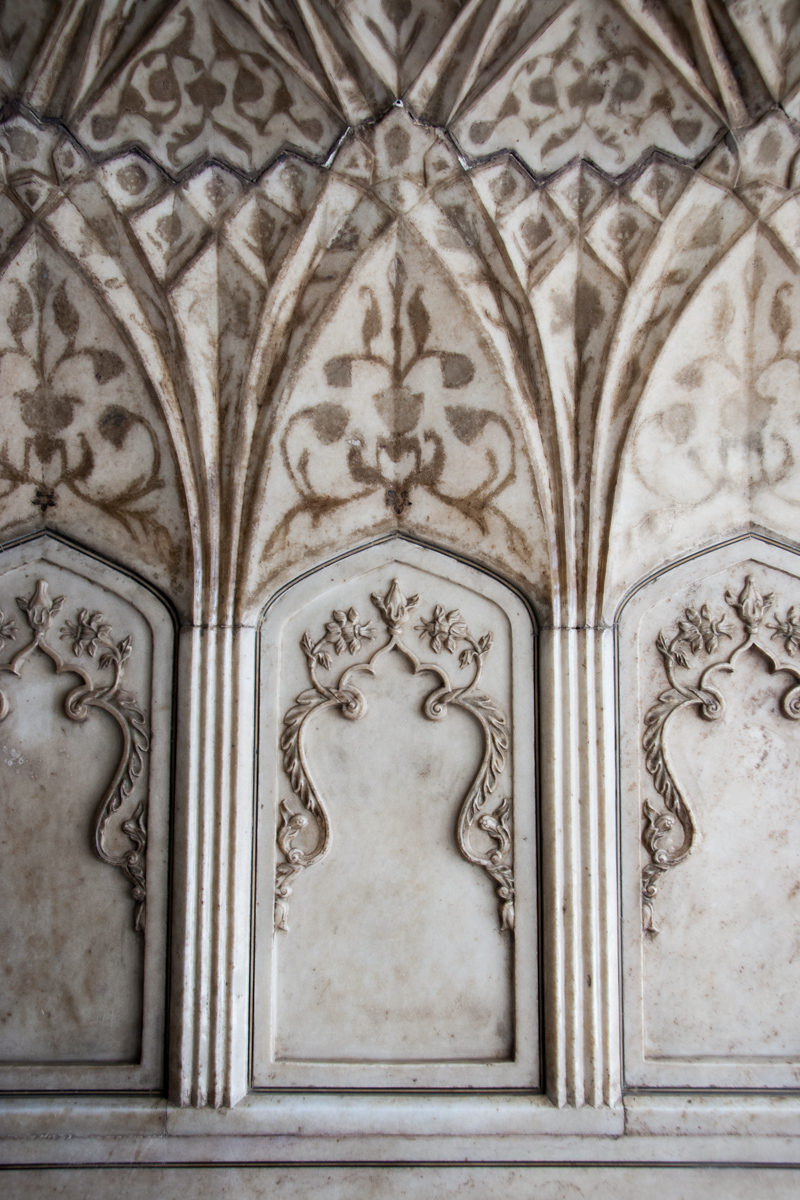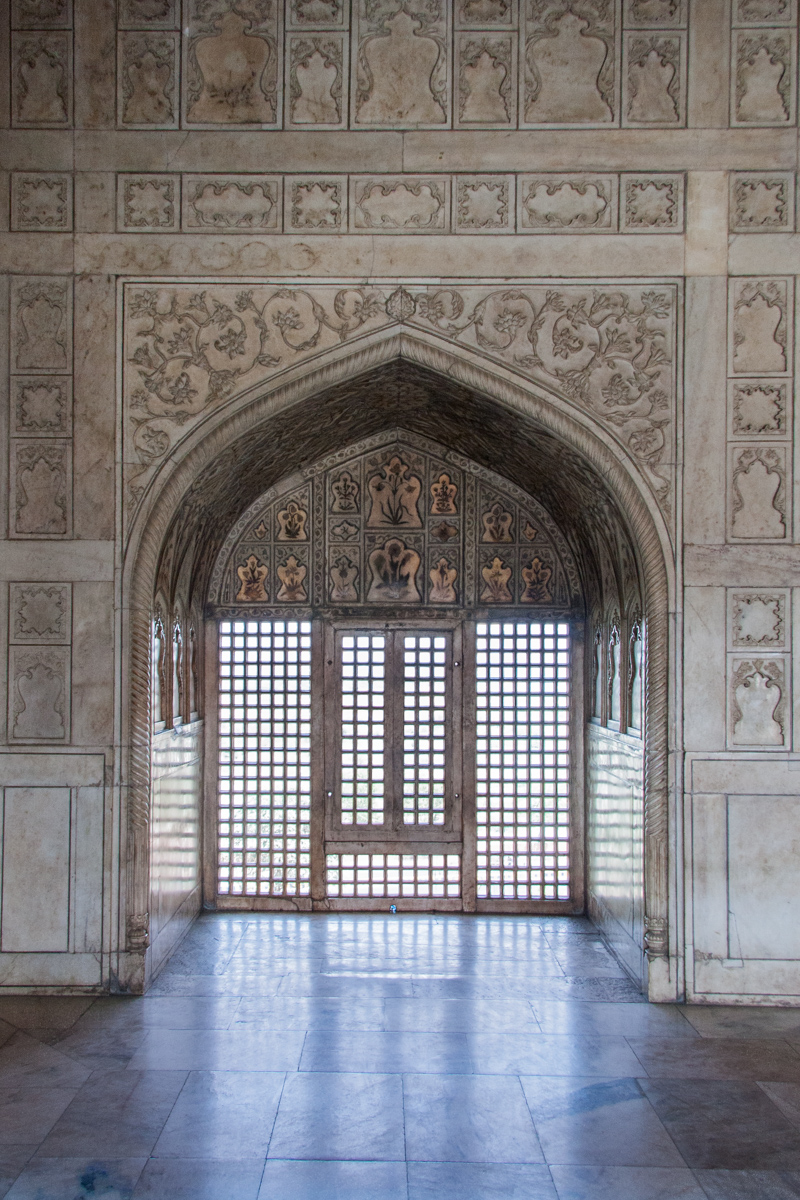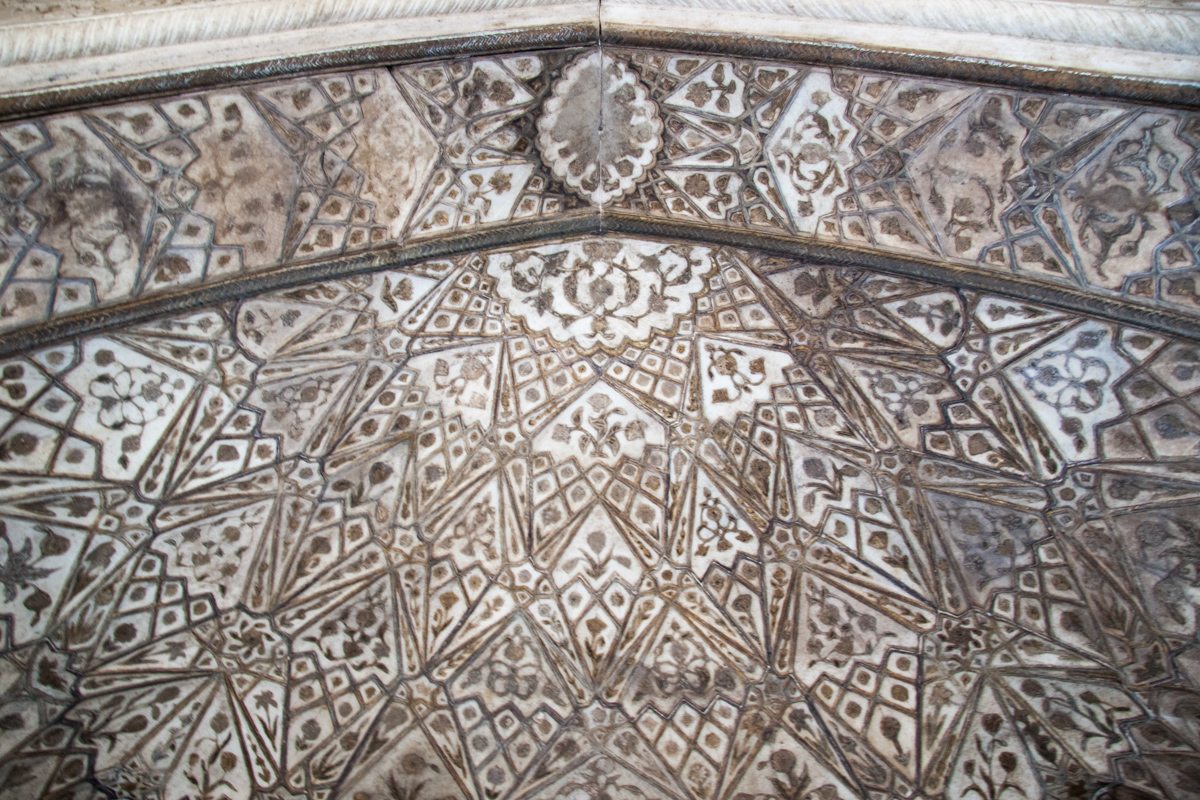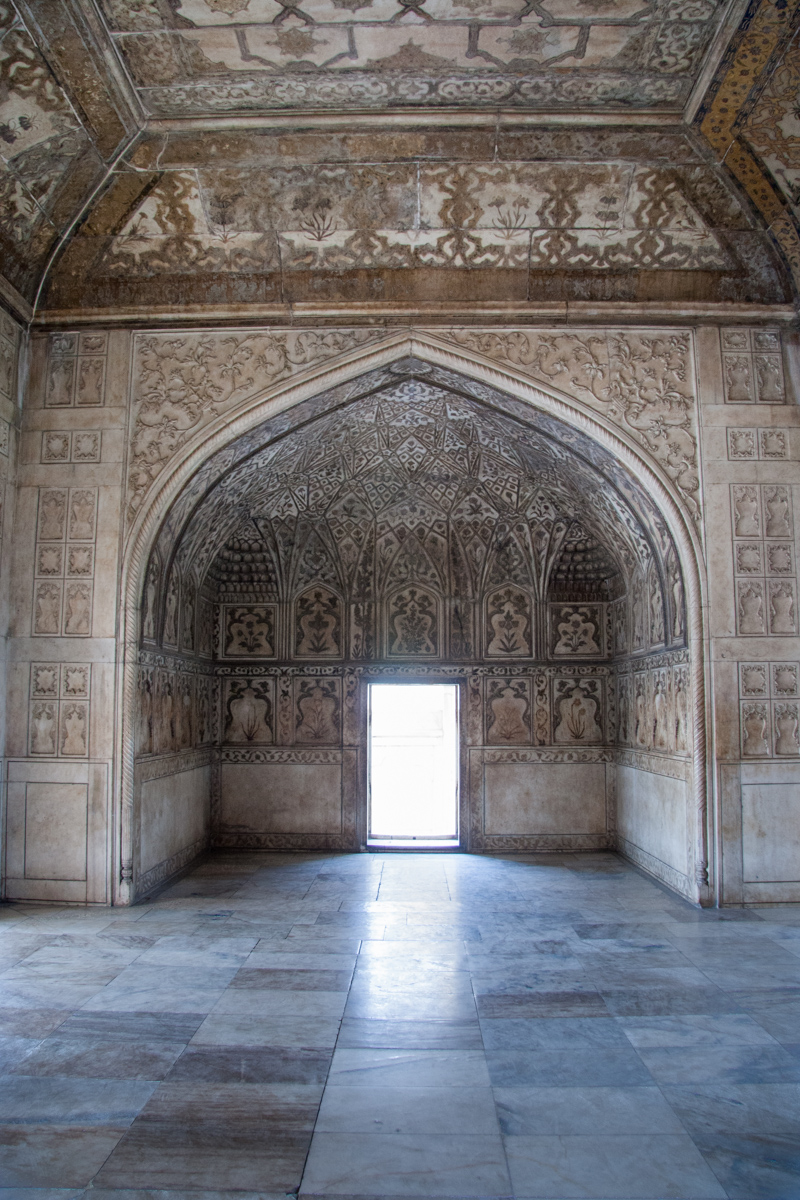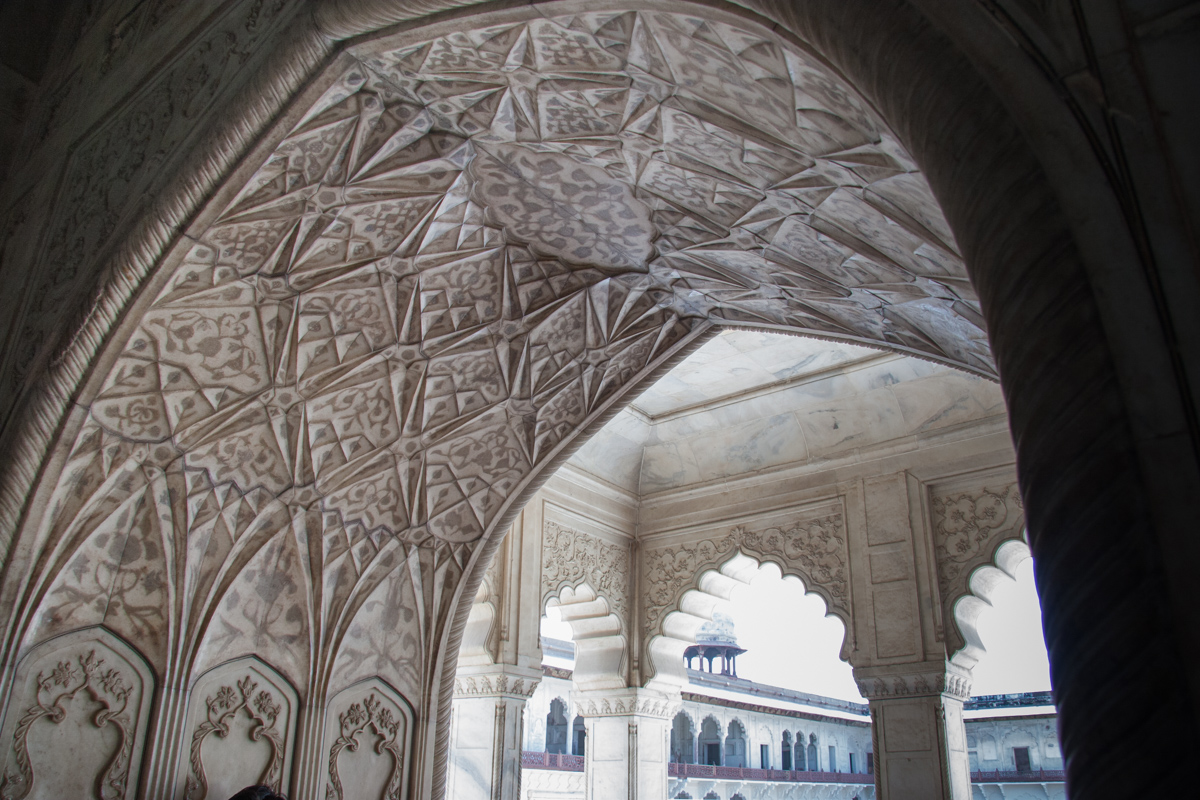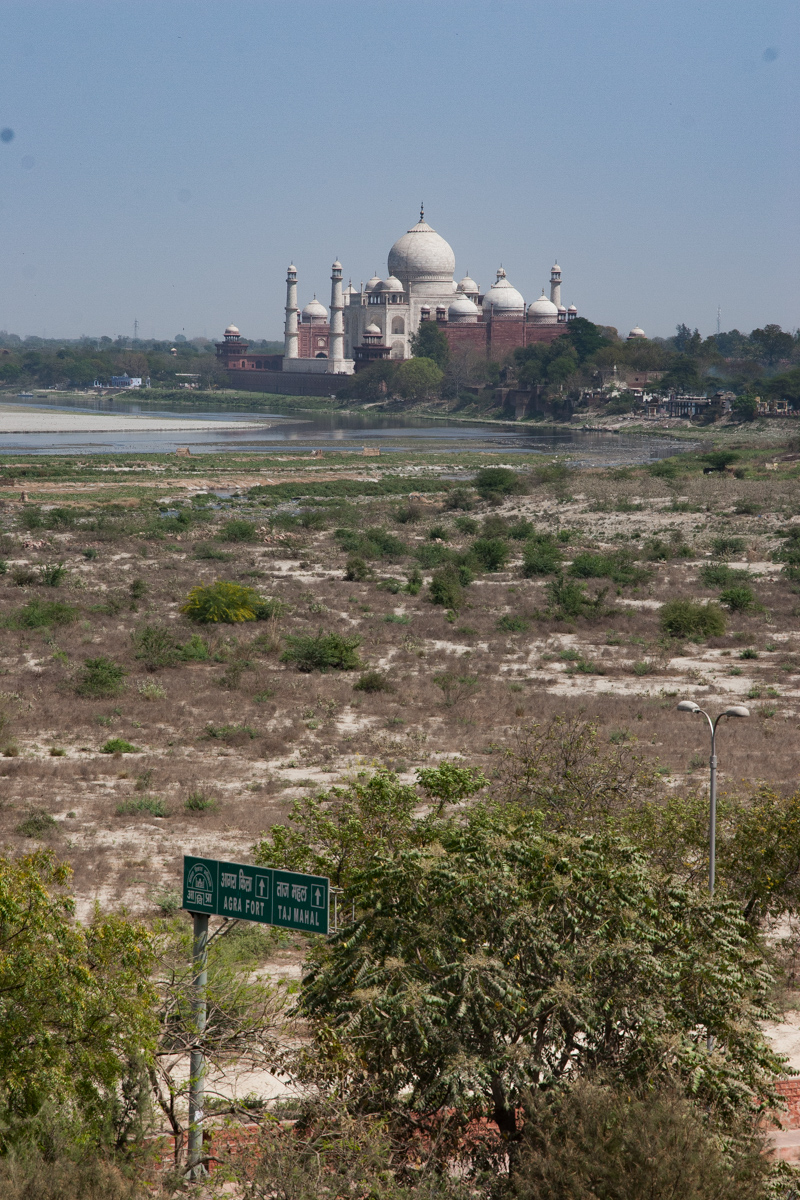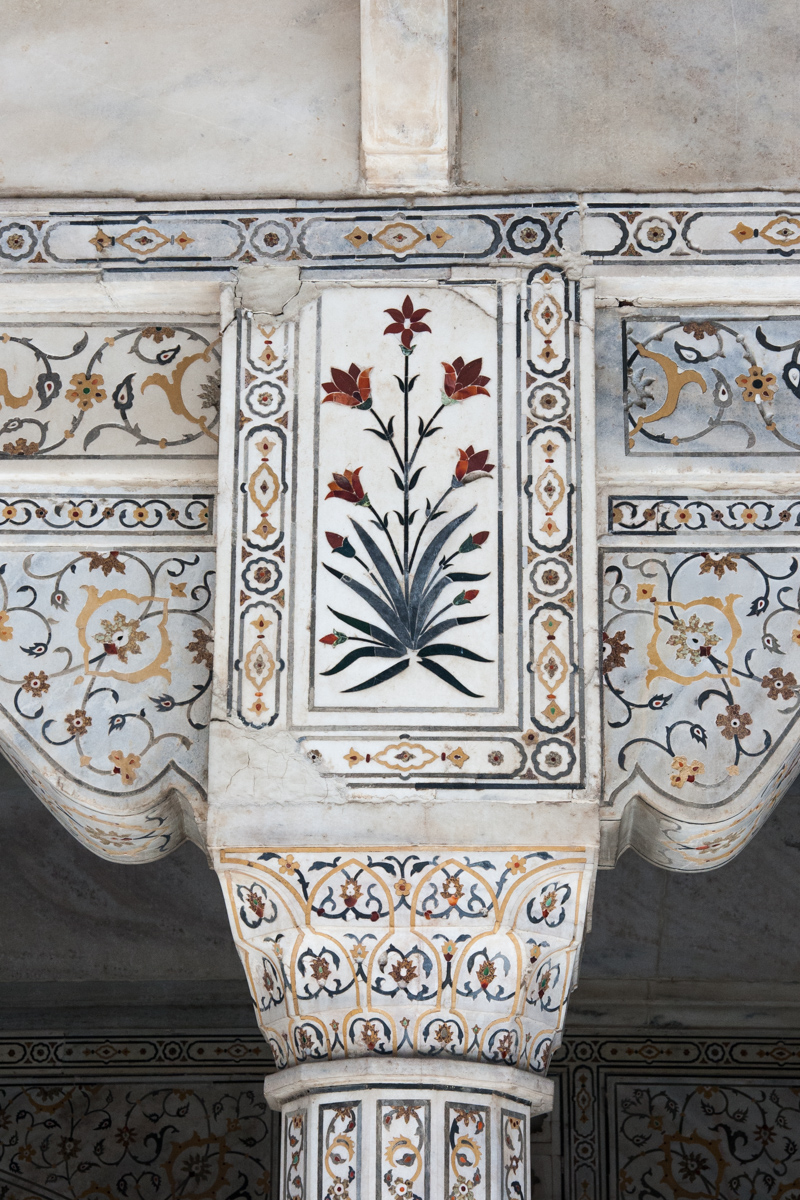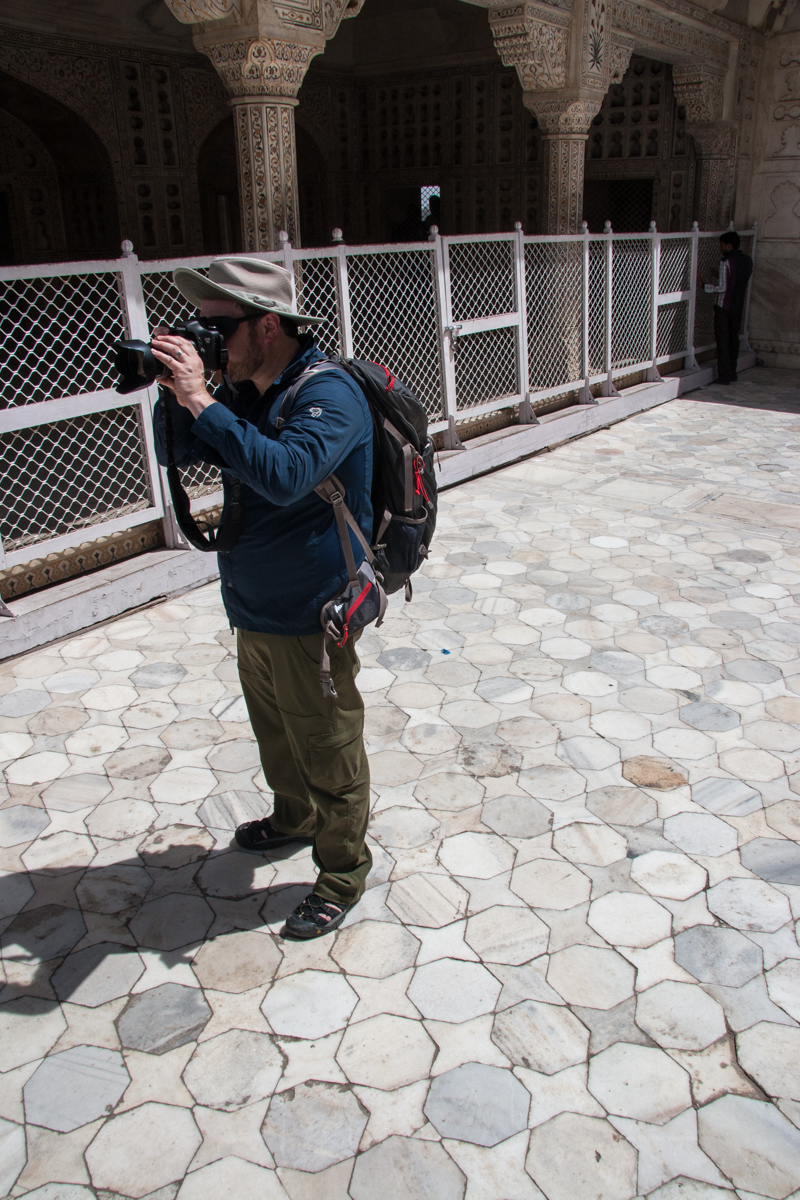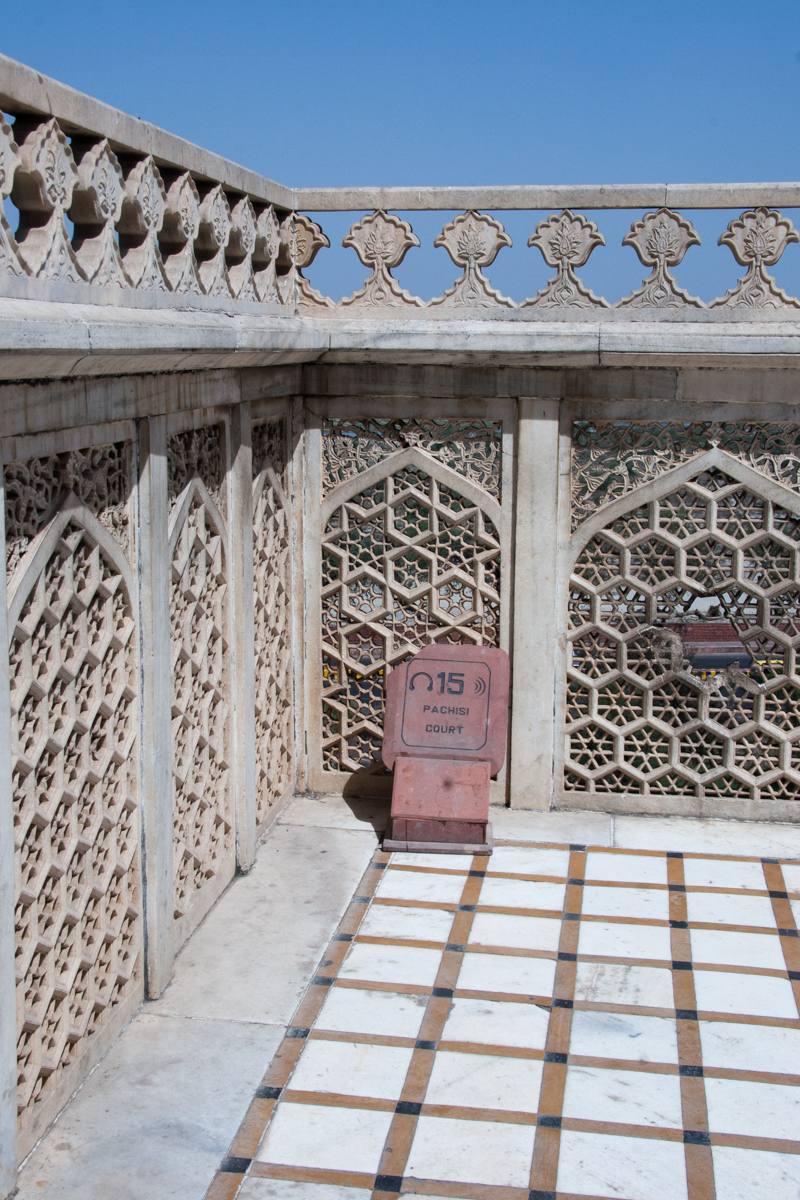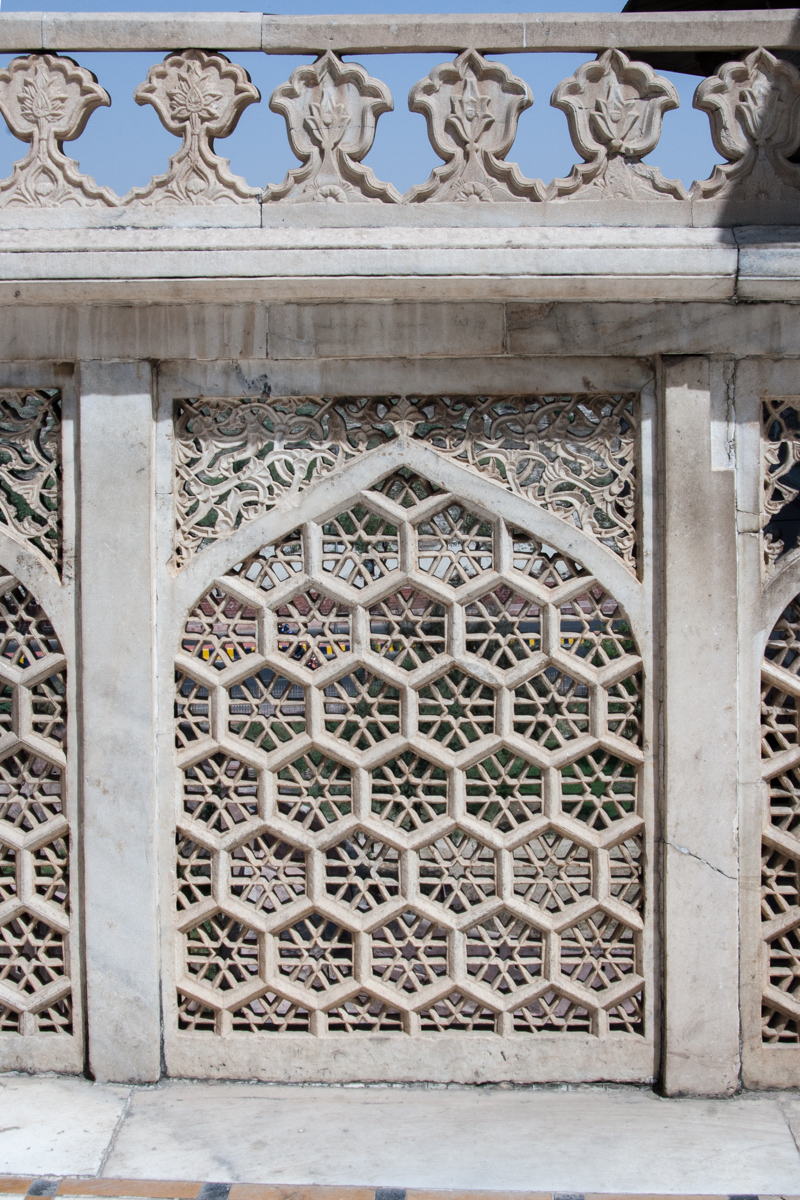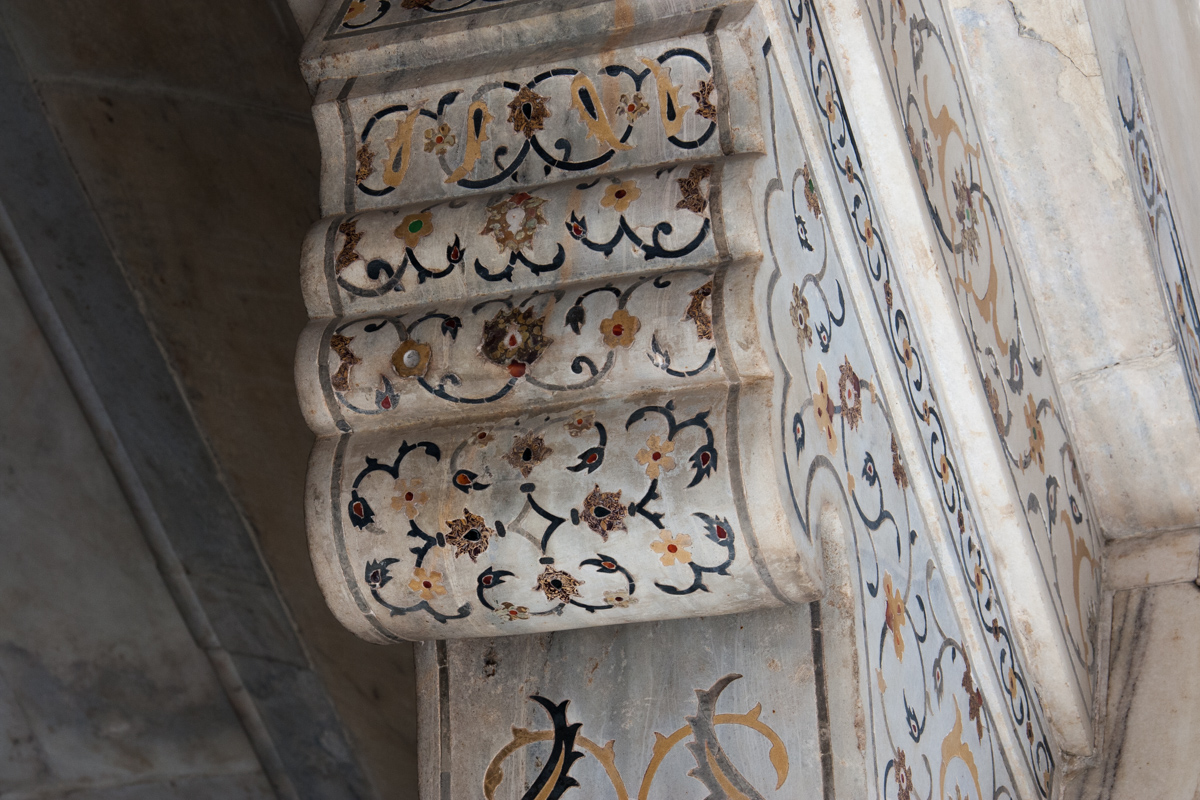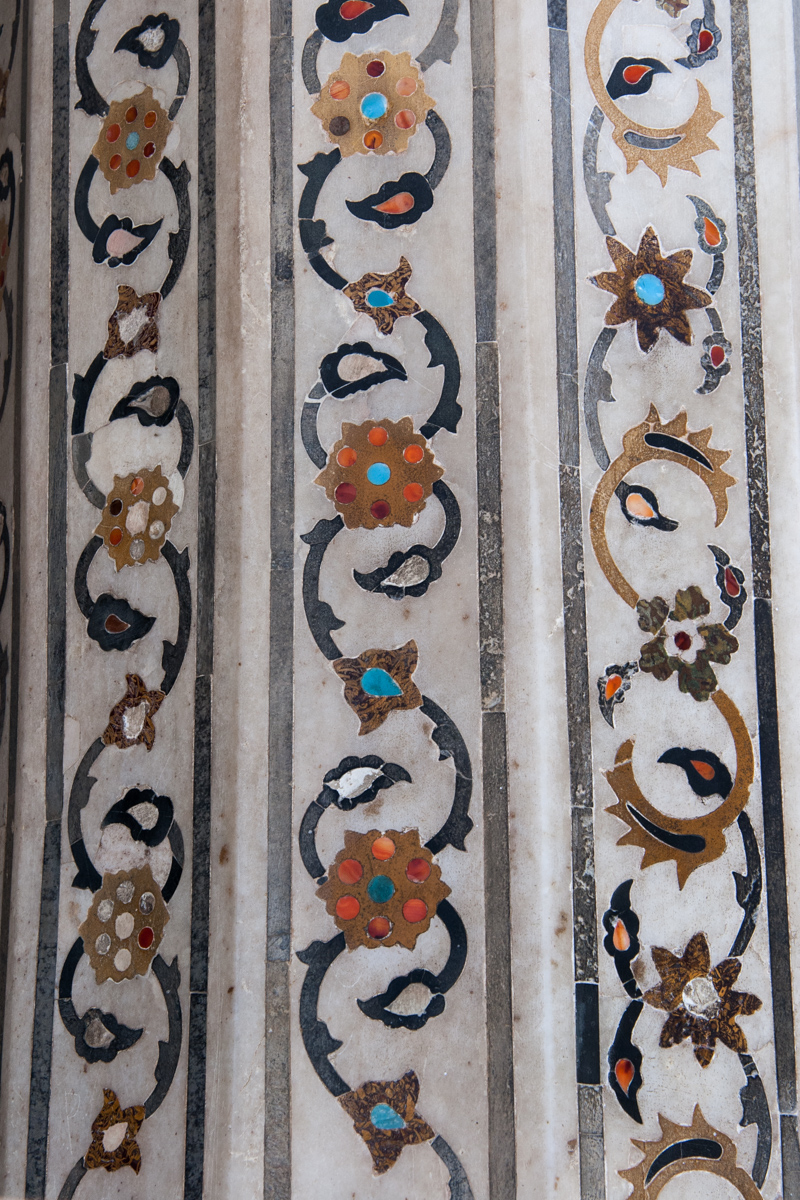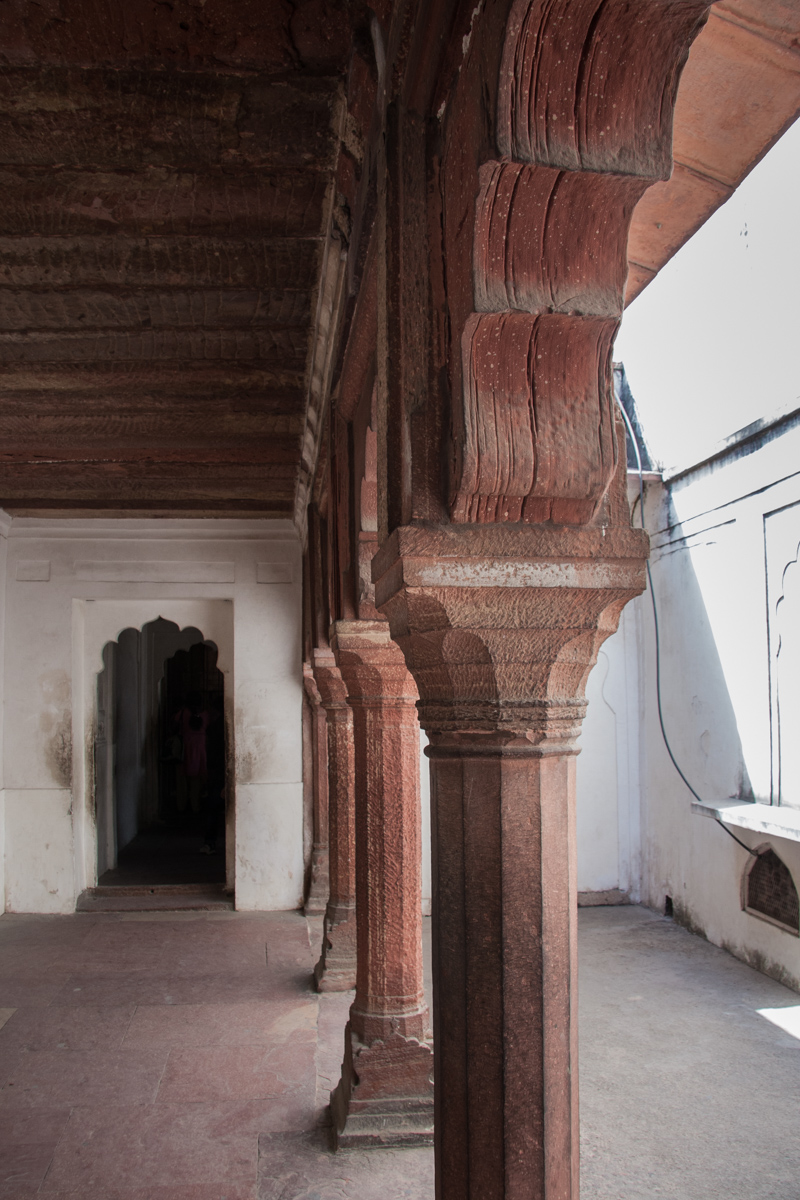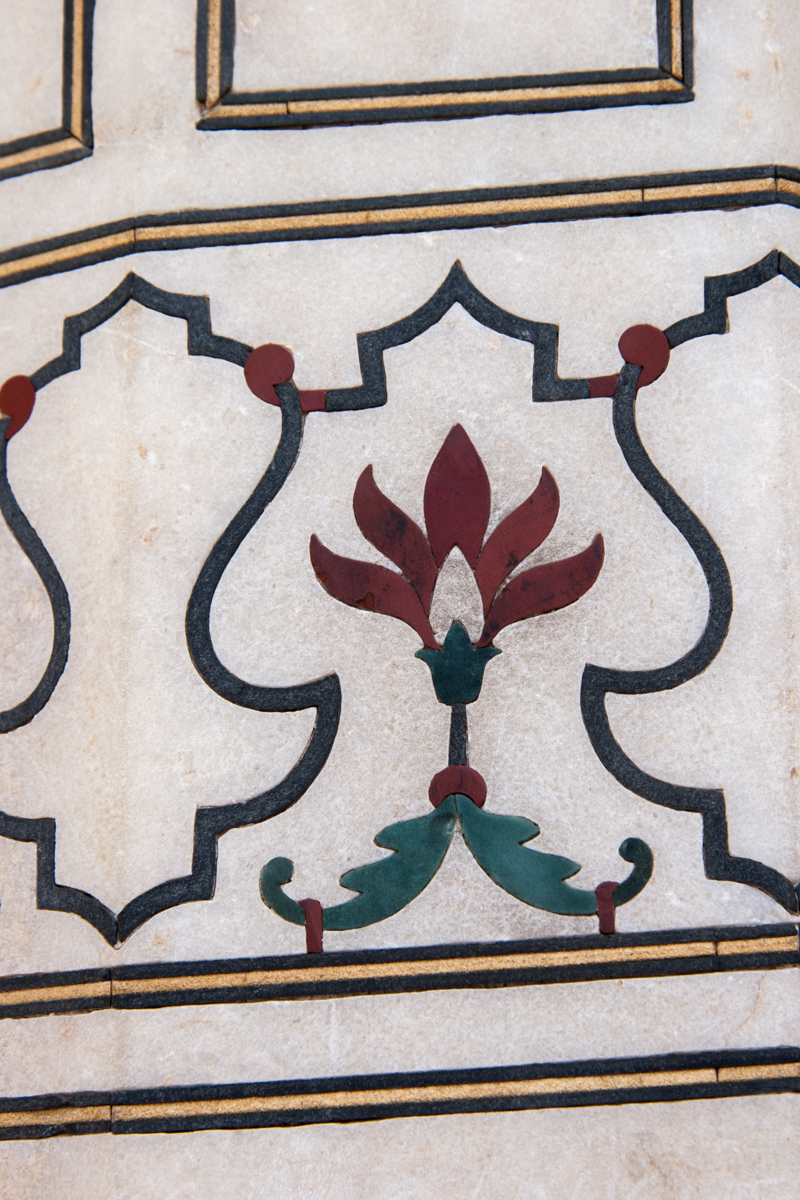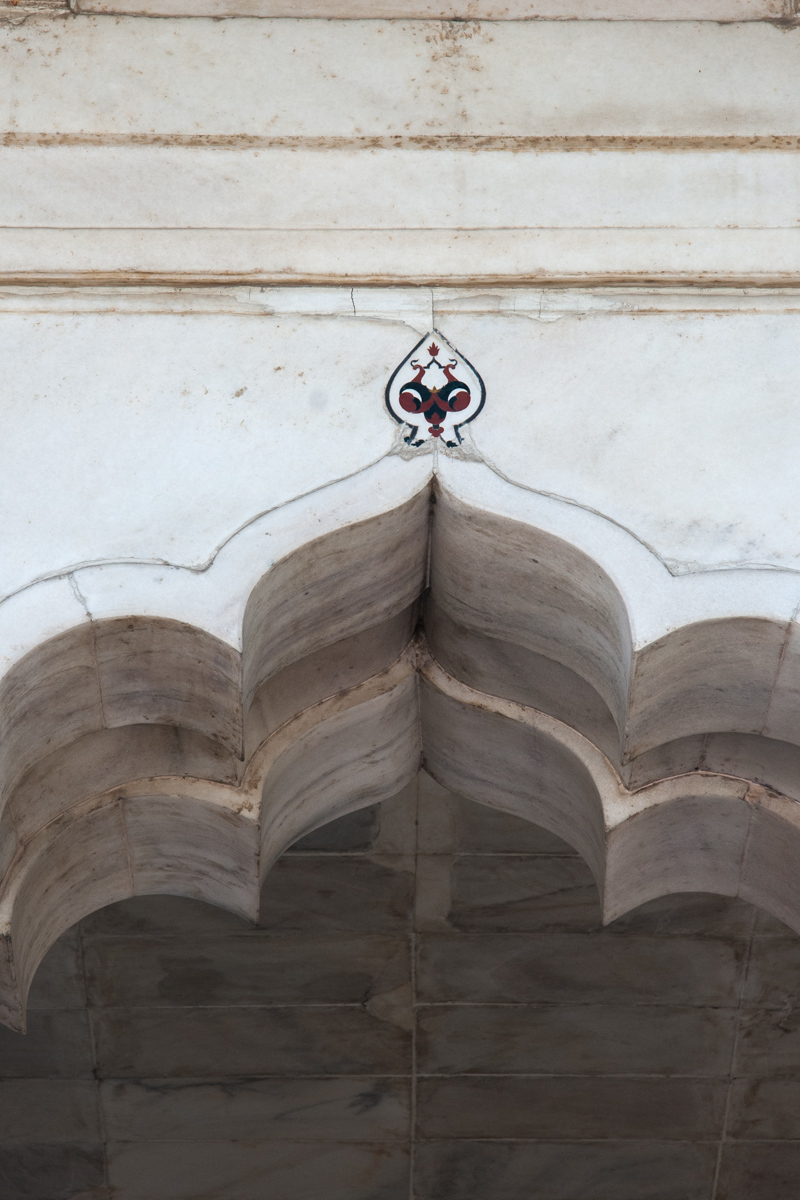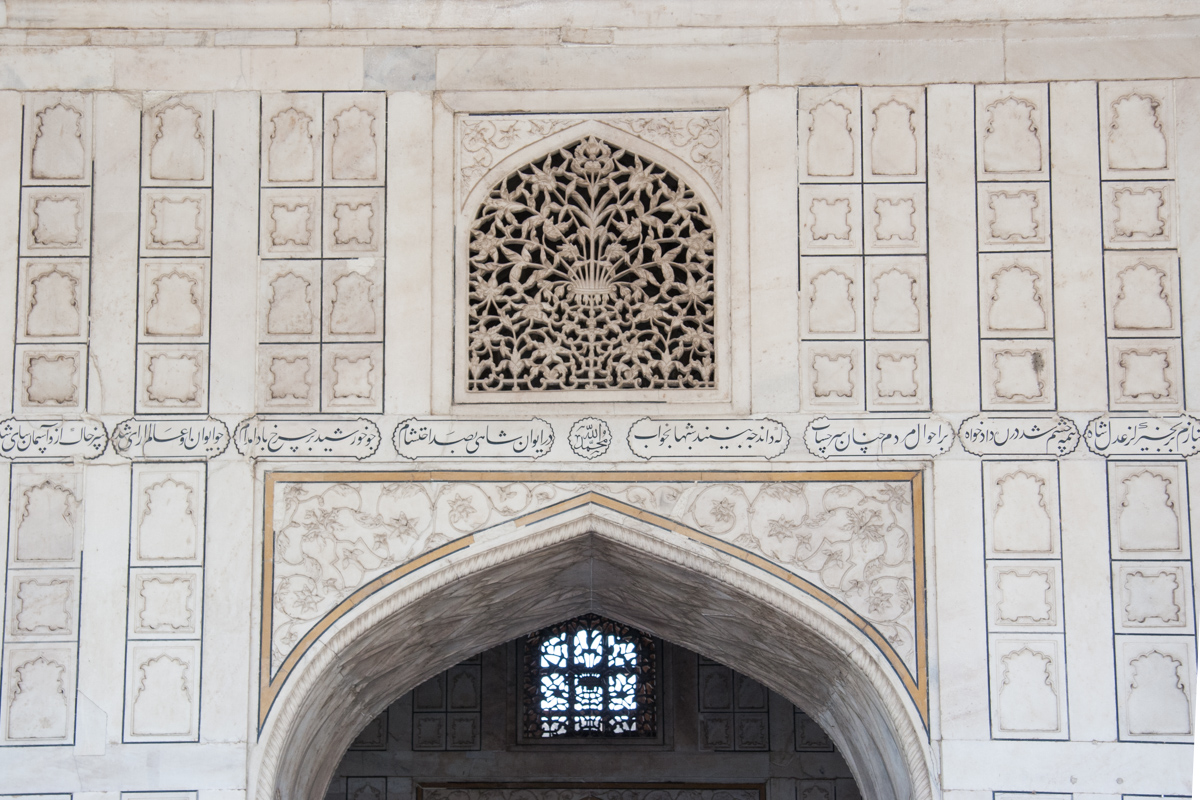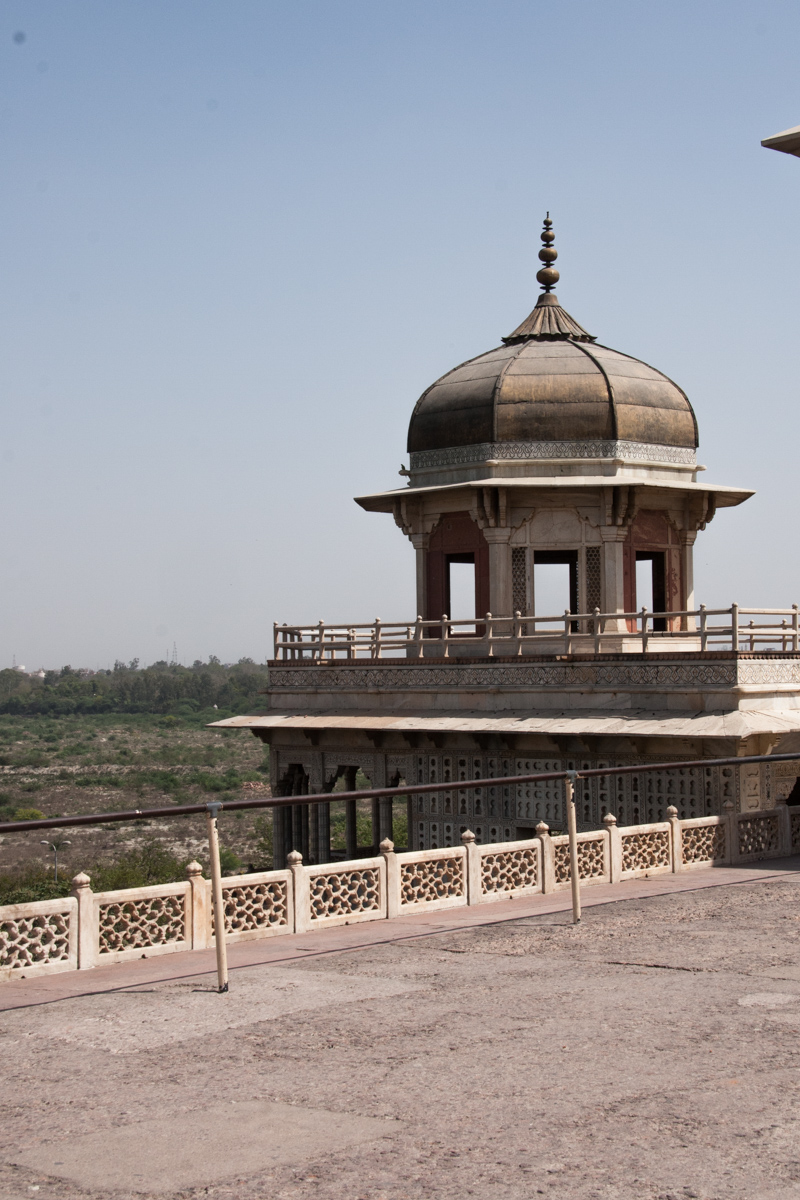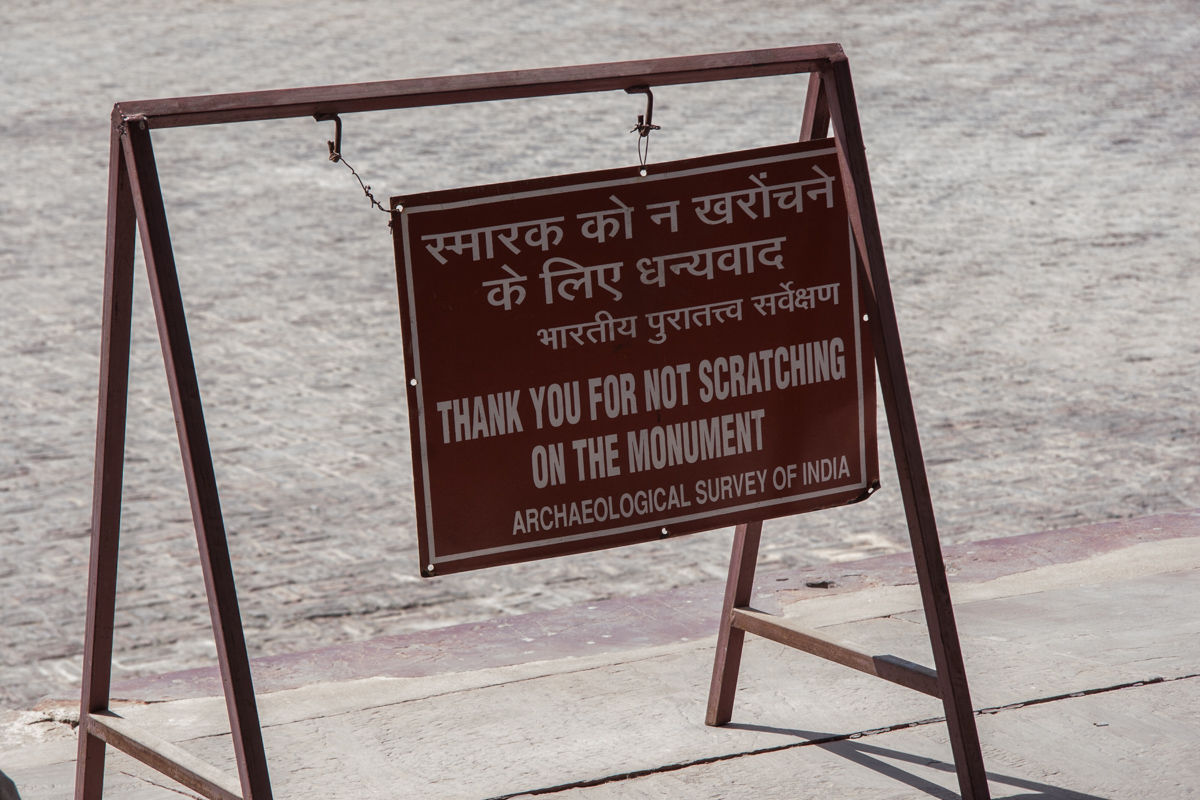After our evening stroll to see the Taj Mahal at sunset, we walked back up to our hotel, and spent a little time checking our email and deciding what to do for dinner. While I was online, I did a little research on Malarone, the anti-malarial drug we had both been taking as a precaution. It turned out that my cold-like symptoms of the past week (runny nose, fatigue, and stomach upset) were all common side effects for the approximately 5% of people who don’t tolerate it well. That explained why I was getting so exhausted walking around in Mussoorie. It’s a hilly place, but we weren’t doing any strenuous hiking, and the 6000-foot altitude shouldn’t have made me feel quite that exhausted. Since we were taking other precautions to avoid mosquito bites—malaria is not the only nasty disease they carry—I decided to stop taking it for the rest of the trip. Though I didn’t relish the idea of coming home with malaria, I also didn’t want to spend the next 10 days feeling miserable and not enjoying myself. Happily, we didn’t have much trouble with mosquitos even in the south, and I came home healthy.
I was still feeling kind of low while we were in Agra, so we scaled back our ambitions for the next day and decided to focus on the Agra Fort. When we stepped out of our hotel in the morning, there was a bit of a scuffle between two tuk tuk drivers who both wanted to lay claim to us. Eventually, one prevailed, and he ended up taking us around for the day.
Emperor Akbar started construction of this massive red sandstone complex, which is 2km up the Yamuna River from the Taj Mahal, in 1565. Its original purpose was as a military fortification. Shah Jahan, who was also responsible for building the Taj Mahal about 65 years later, transformed it into a palace. There are a number of audience halls, palaces, mosques, and other structures within the fortress. While it’s not quite as ornate as the Taj Mahal, it’s still a pretty impressive place to walk around. I’ve read a few historical novels about the Mughal period, which included scenes set in these palaces. It was fun to imagine what daily life as part of the court might have been like.
It was another quite hot day, well into the 90s and maybe even topping 100. By early afternoon, we’d had our fill of the fort and wanted to look for some lunch. Dan had his eye on a nearby South Indian place called Dasaprakash, so we asked our driver to take us there. We were on the late side for lunch at about 2pm, but the staff was friendly and helpful. We enjoyed some dosai and idli, and were introduced to uttapam, a thick rice-flour pancake topped with chopped tomatoes and herbs. All of these are traditional foods from the south of India. I’ve known and loved dosai for a long time, and idli show up regularly on menus at Indian places in the United States. The uttapam was new to us, though, and we both liked it quite a bit.
Dasaprakash is also known for its ice cream, and Dan wanted to get a sundae. We got dessert menus from the waiter, and much to Dan’s surprise, all of the sundaes listed were knockoffs from Swensen’s, an American ice cream parlor chain that he remembers fondly from his youth. There was a Black Bart and a Gold Rush, and a few of their other signature sundaes. This chain is not very prevalent in the U.S. any longer, but seems to have a reasonable but somewhat scattered presence in Asia. Oddly enough, we came across one unexpectedly in Bangkok when we were there in 2008, and the menu and interior were exactly like the one Dan remembers from his childhood here in Santa Barbara.
After a yummy and filling lunch, we headed back to our hotel. We had a little time to kill before heading to the station for our train back to Delhi, but not really enough time to go visit another attraction. We figured we’d just chill out at the hotel for a bit, and Dan also needed to send a few emails. When we got back, we discovered that the power at our hotel was out, and so there was no internet access to be had there.
The centralized power service seems to go out quite often in many parts of India, and so many homes and businesses have generators if they can afford them. We decided to walk down the street to see if any of the internet cafes were open, but had no luck on our side of the street. It was a Friday afternoon, which may also have had something to do with this. The Taj Mahal is closed to tourists on Fridays. There’s not a lot else of interest on that side of the Taj, so there wasn’t much activity in the neighborhood.
We crossed over to the other side to check the café we had seen over there. When we asked the older fellow sitting under an umbrella on the patio, he told us that power was out for the whole block, and likely would not be restored for several hours. He then invited us to sit down and have a chat. I was expecting we’d be hit up to buy a drink or a snack, but no—this fellow just seemed to want to pass the time. He asked where we were from, and when we told him California, he told us that he’d lived in the Bay Area for a number of years, working in marketing for a company that was a direct competitor to Sun Microsystems.
We chatted with him for a good while. He encouraged us to ask him about Indian culture, and he shared with us some of his views on world economics, which had a bit of a conspiracy-theory undertone to them. Despite this, he was quite hospitable and fun to talk to, and even shooed away two young men who asked his permission to approach us. He also made passing reference to running the hotel we had stayed in, though it wasn’t clear if he owned it or simply managed it. Dan’s conclusion was that he was the neighborhood ‘godfather,’ and I think he was quite possibly right about that. Regardless, it was a delightful way to pass an hour or so, and a nice finish to our time in Agra. We bade him farewell, picked up our luggage at the hotel, and met the cab that we had ordered to take us back to the train station.
